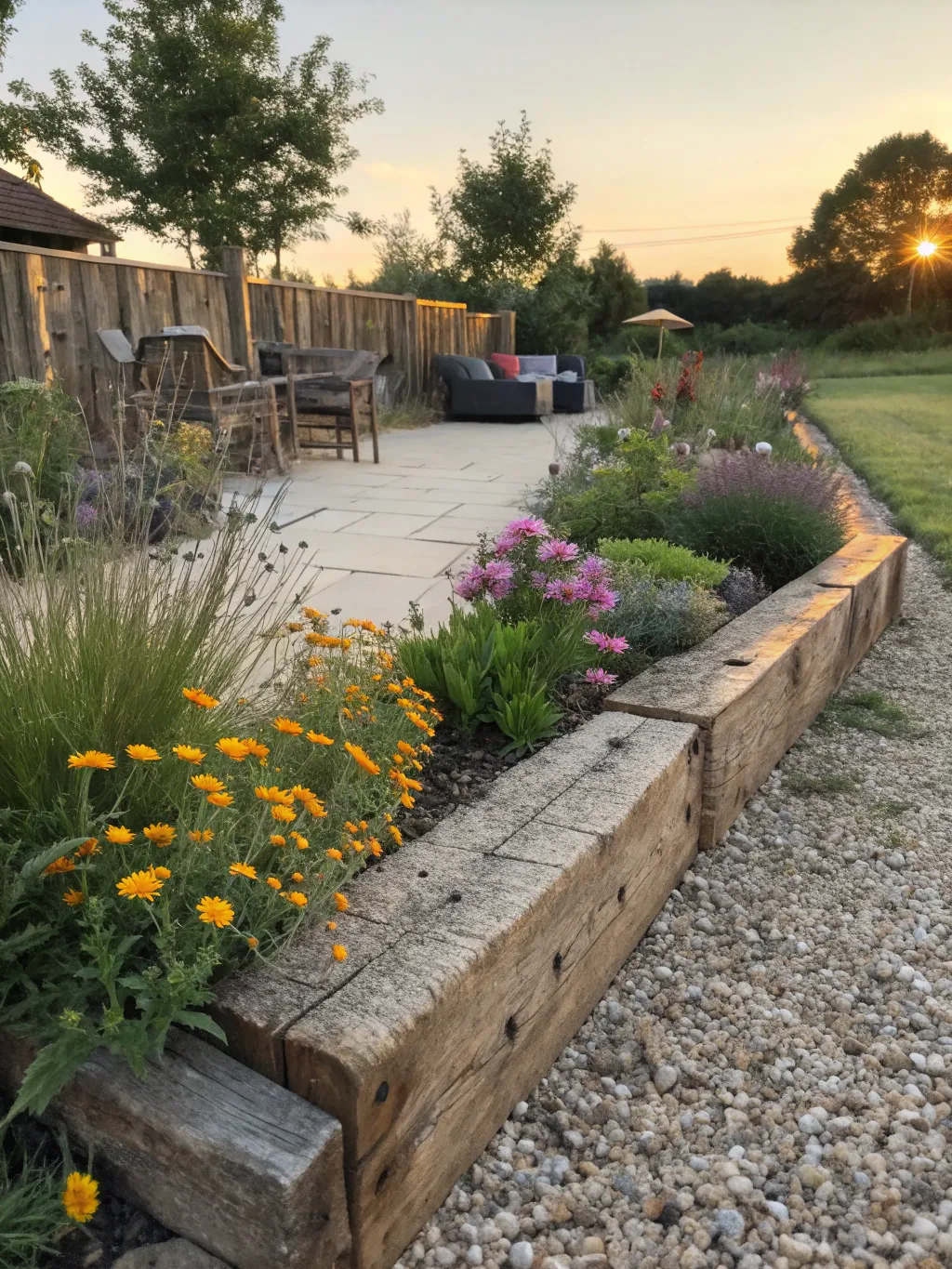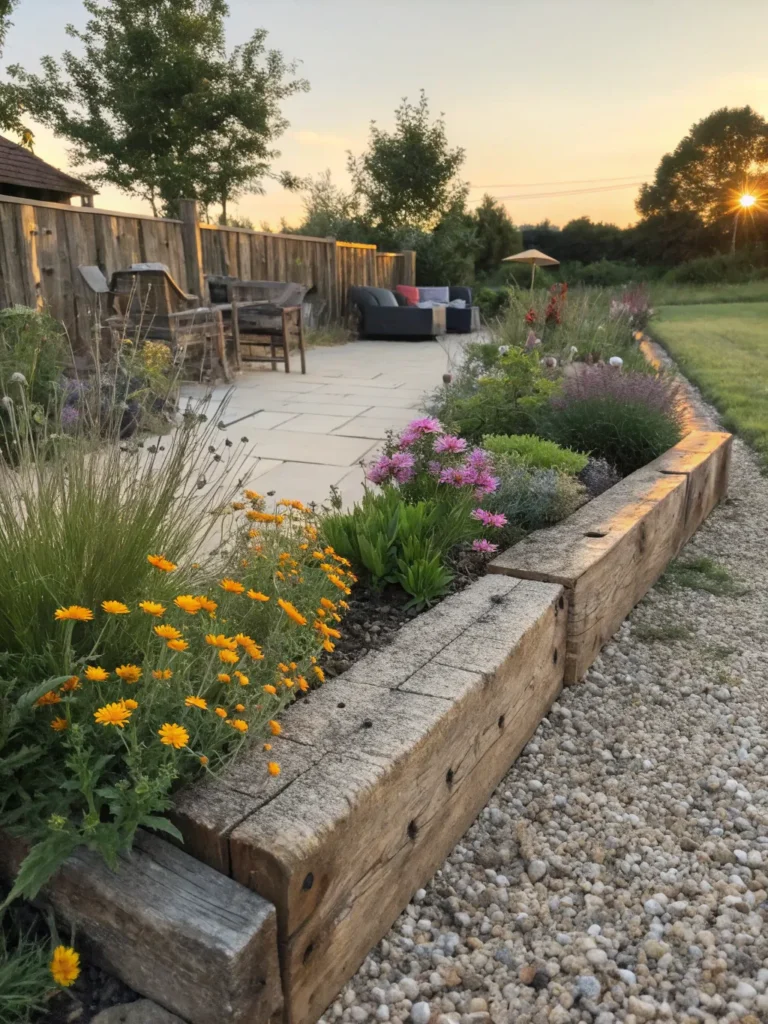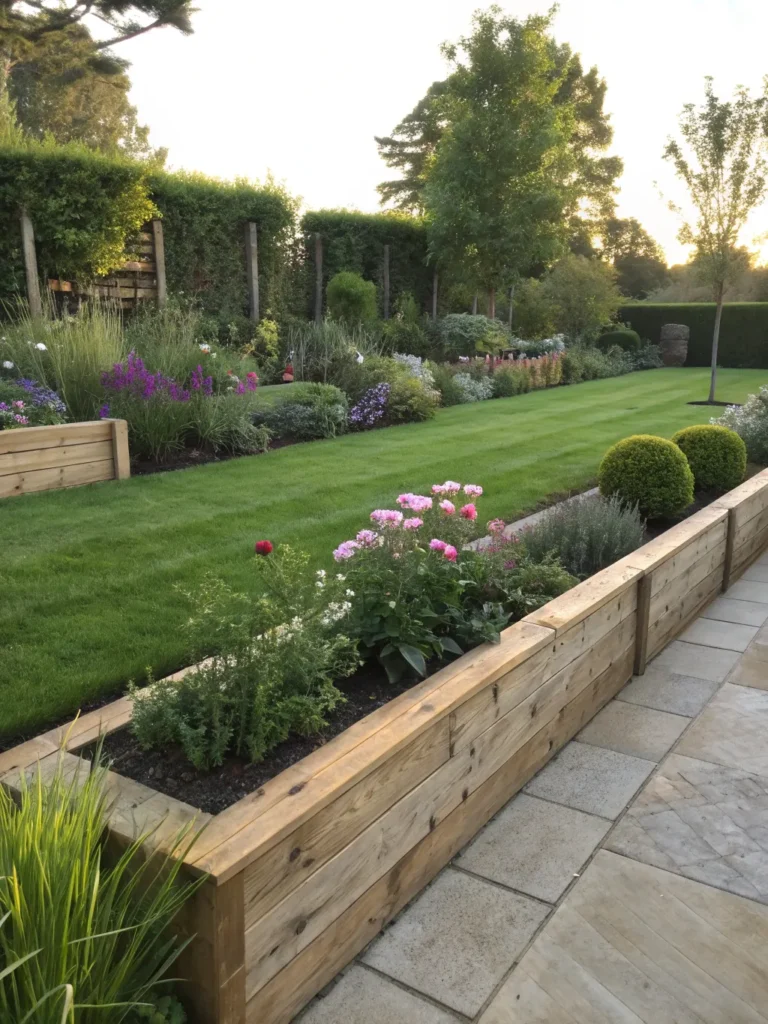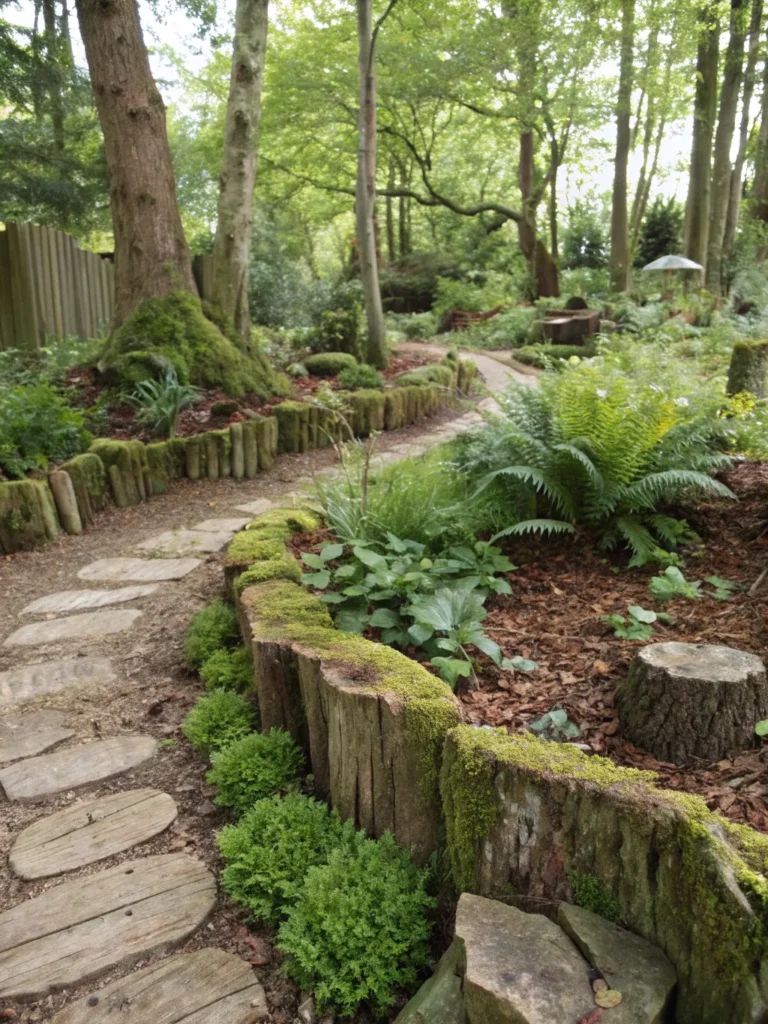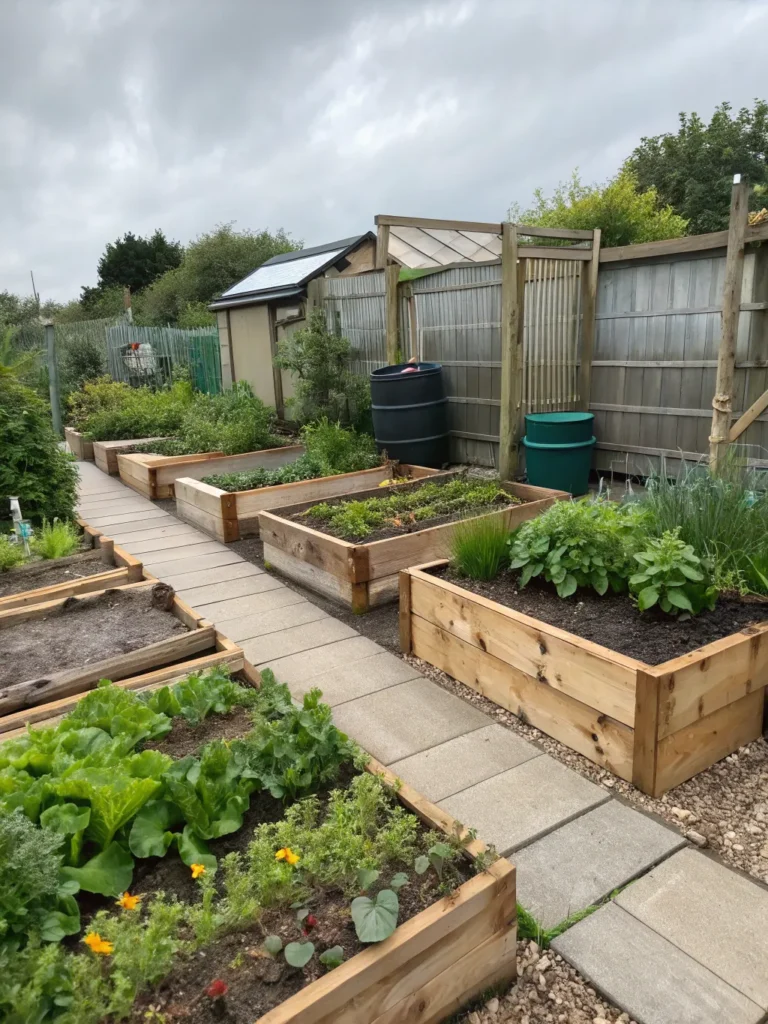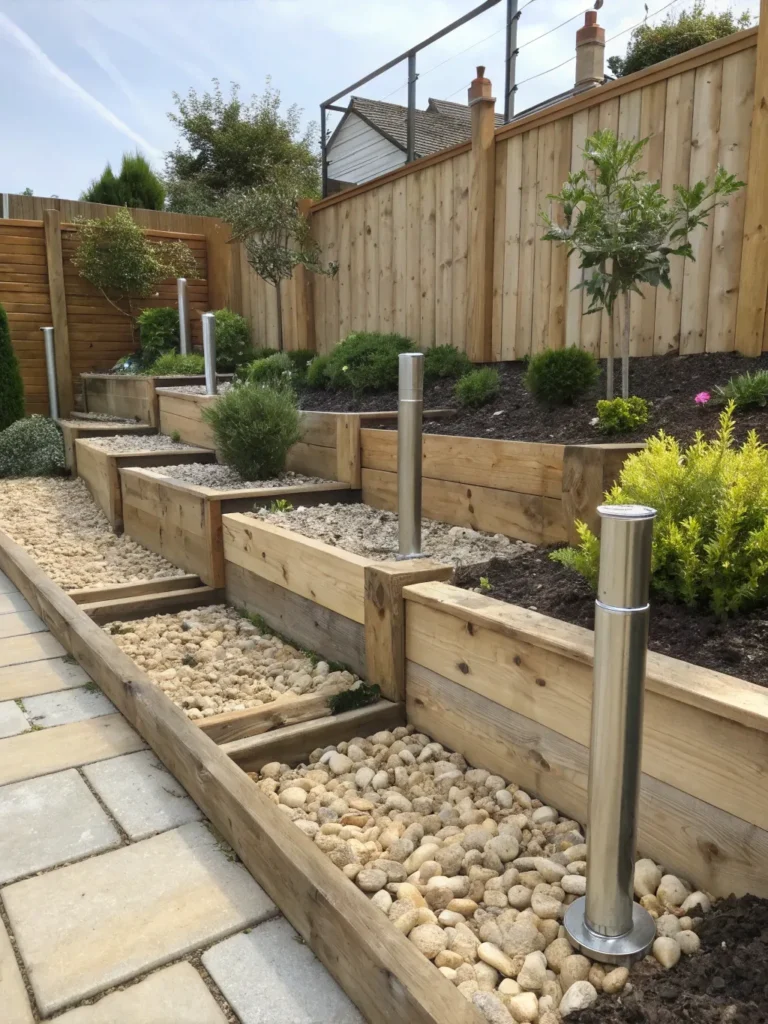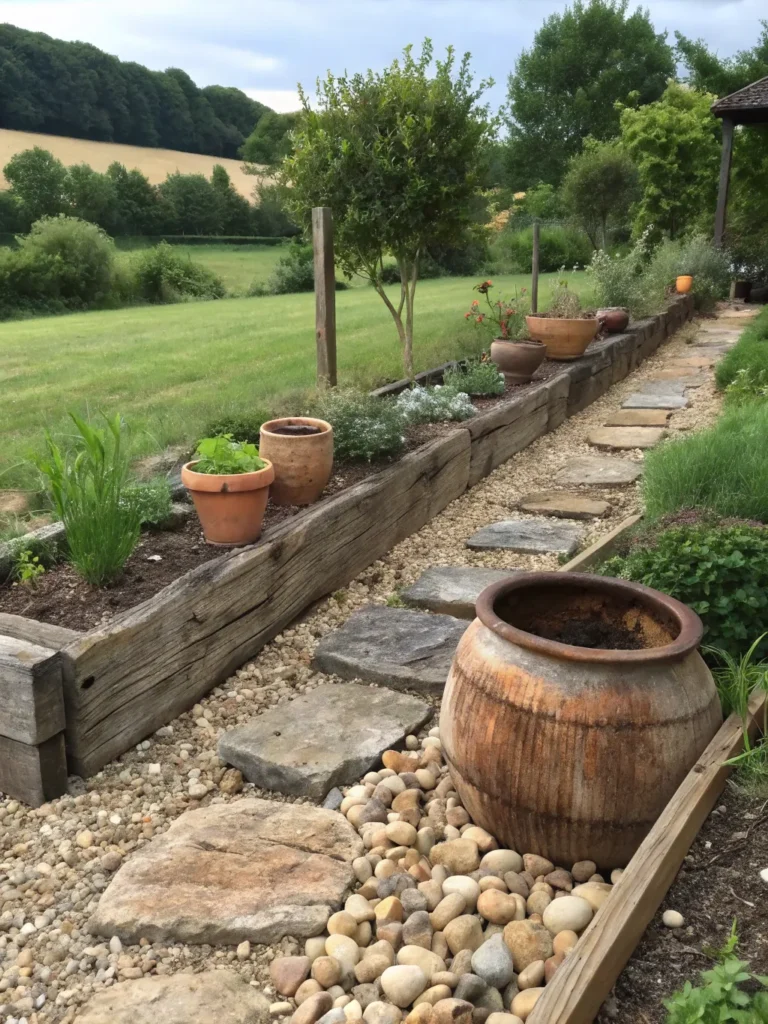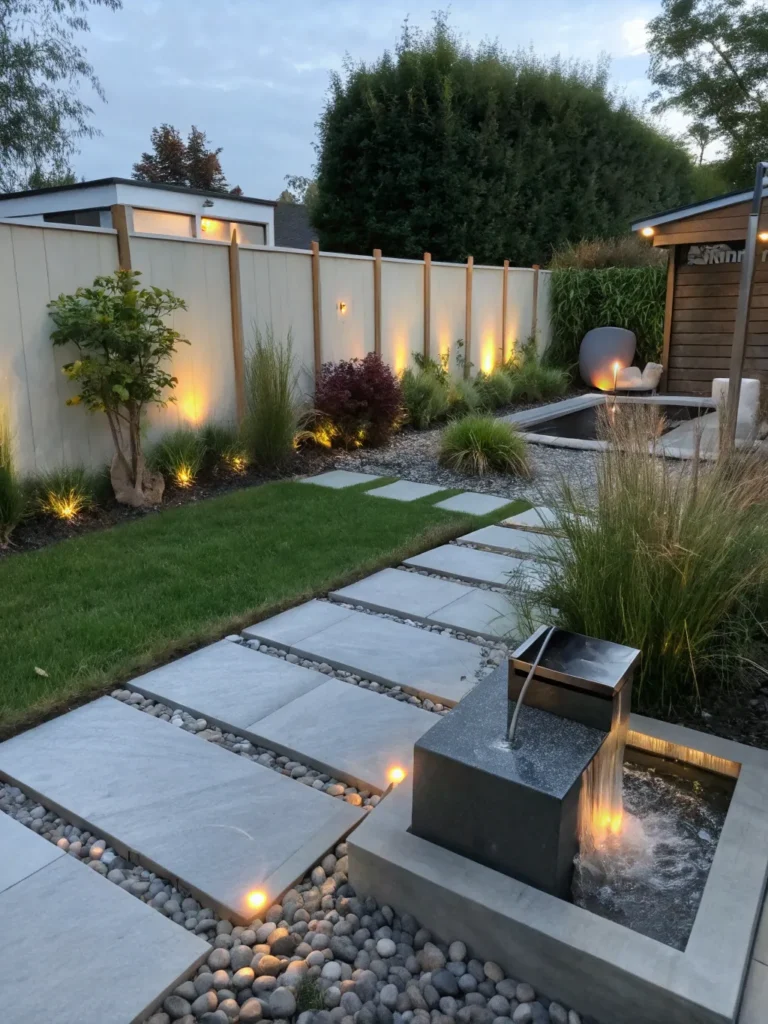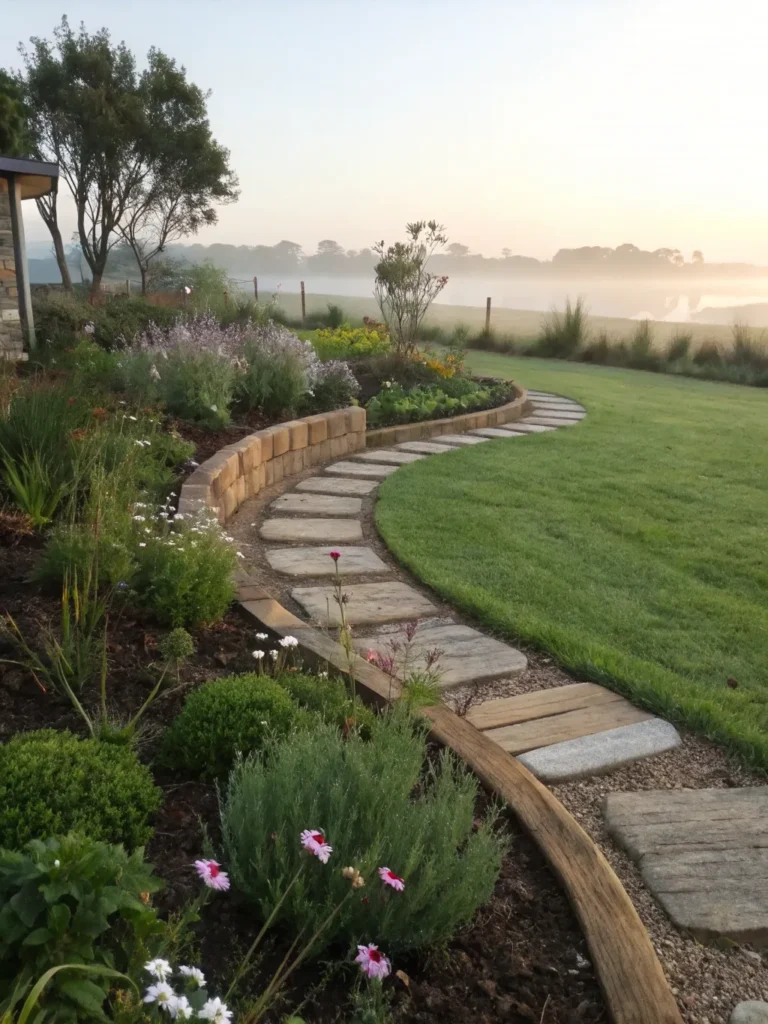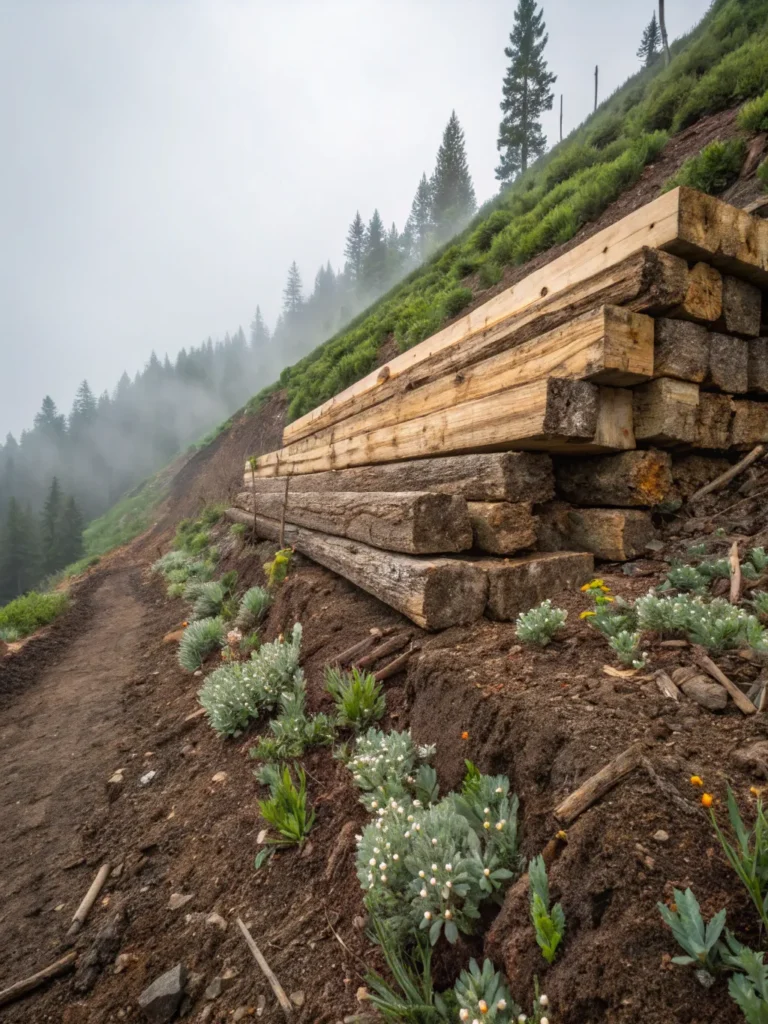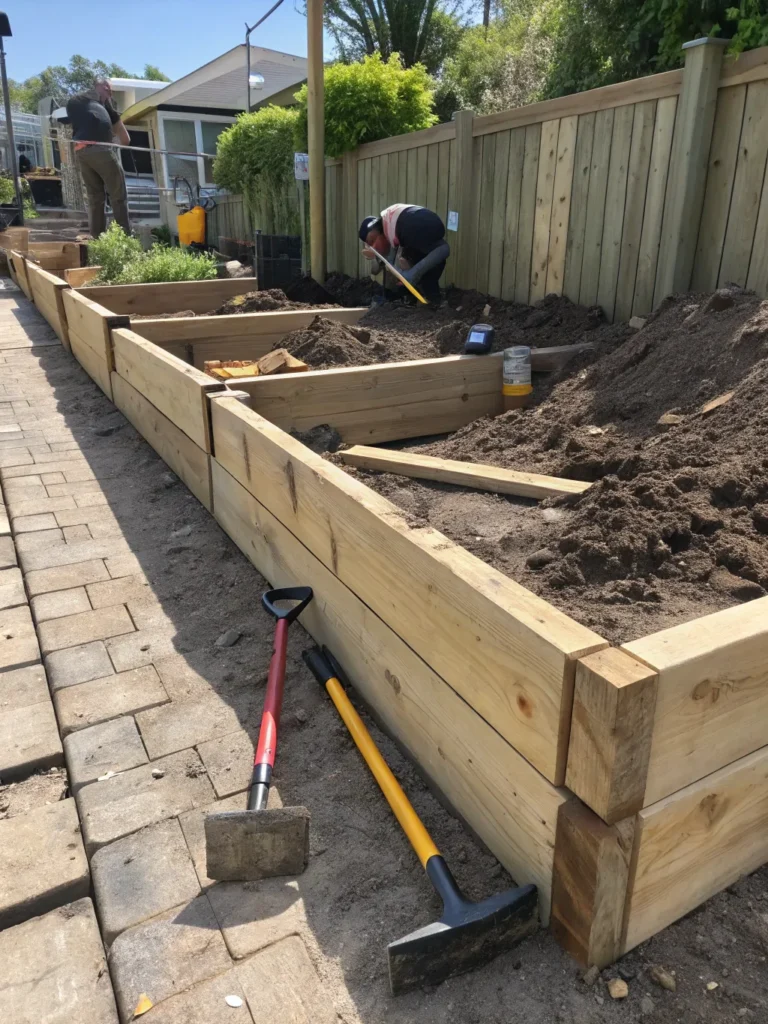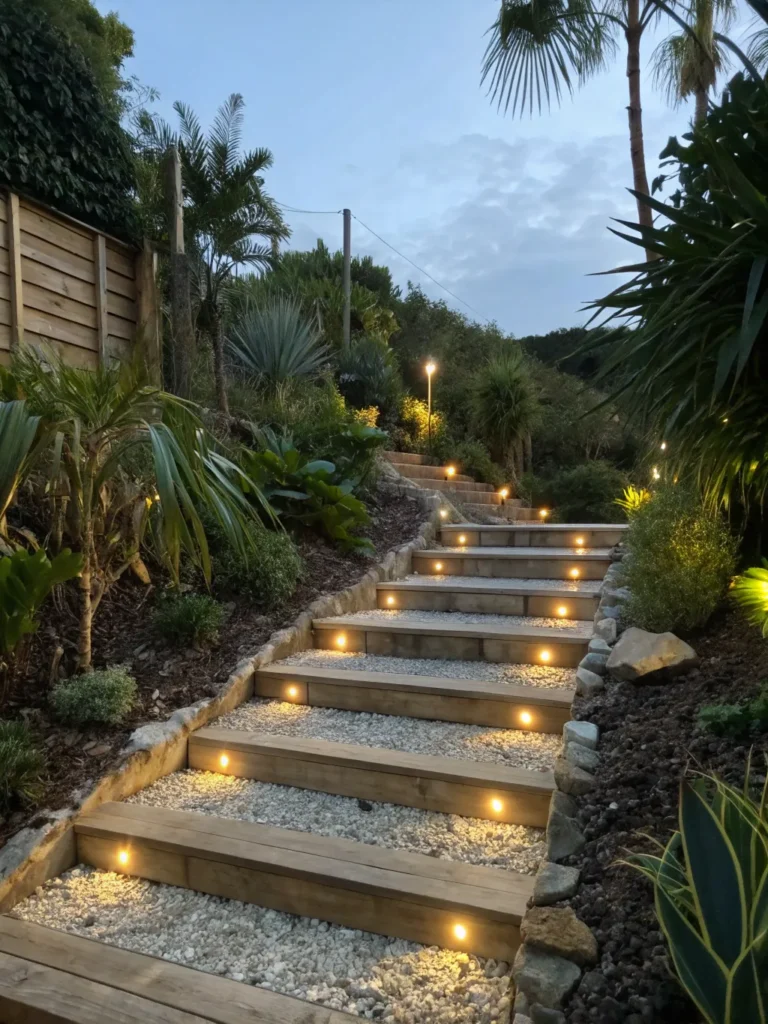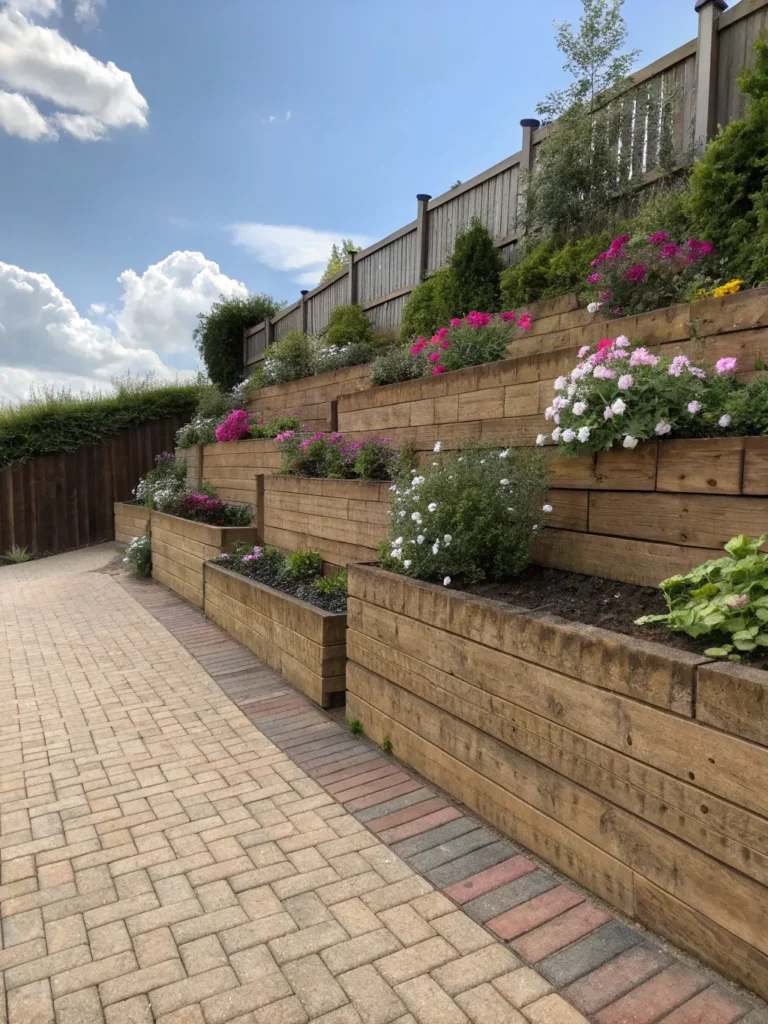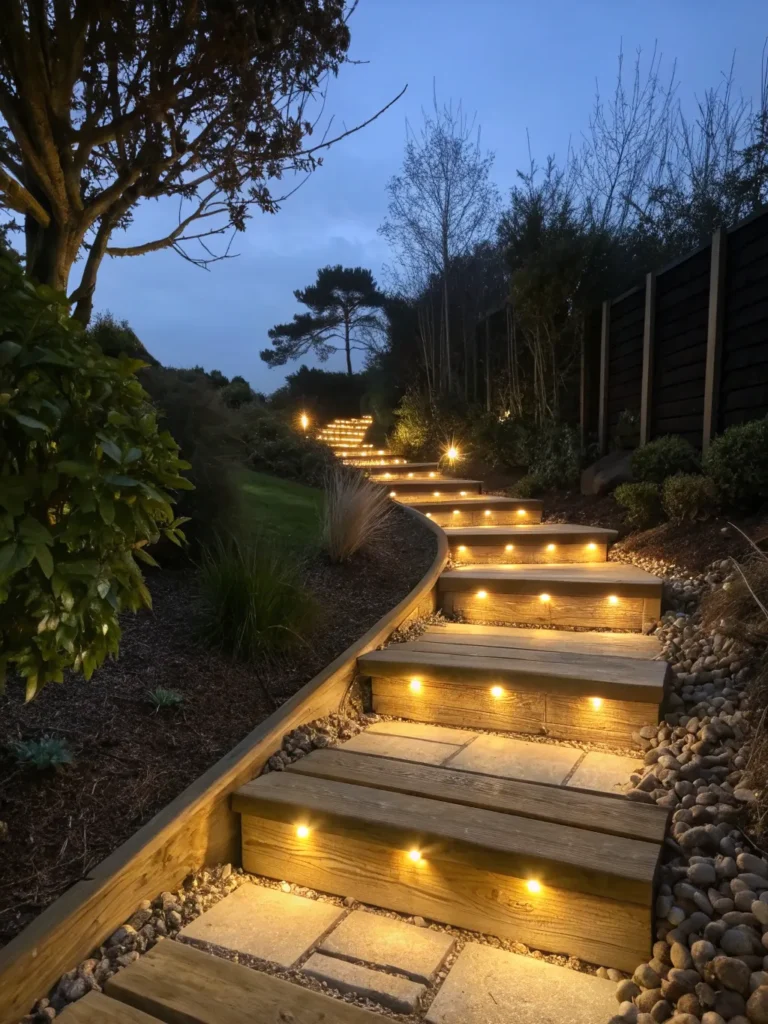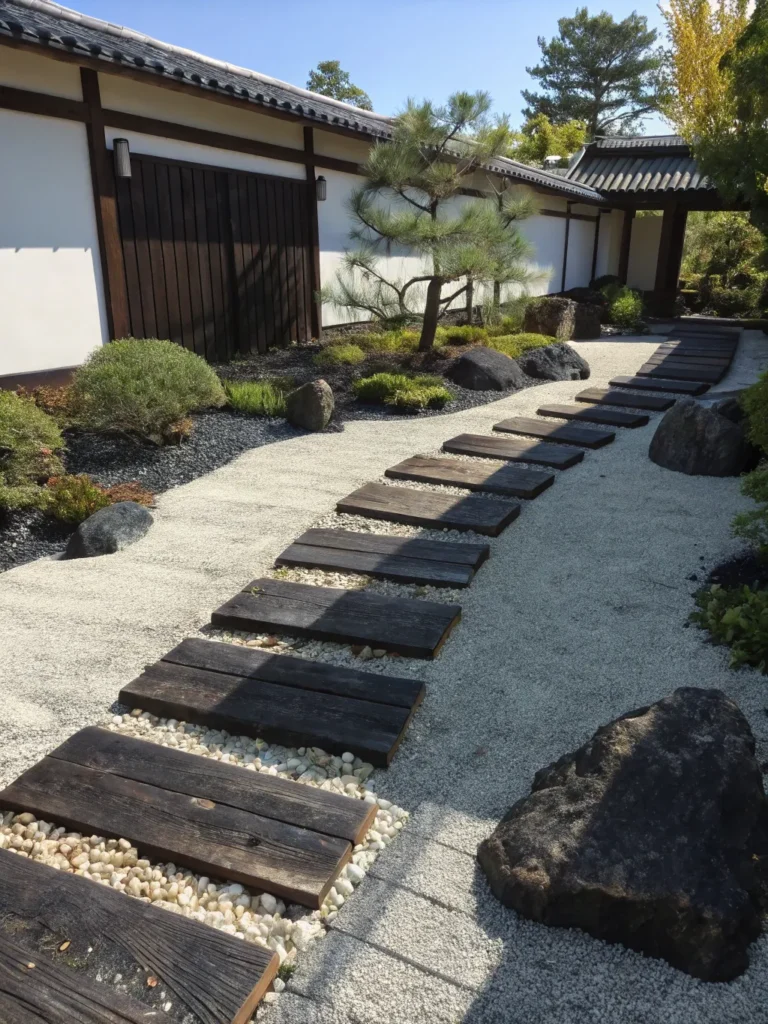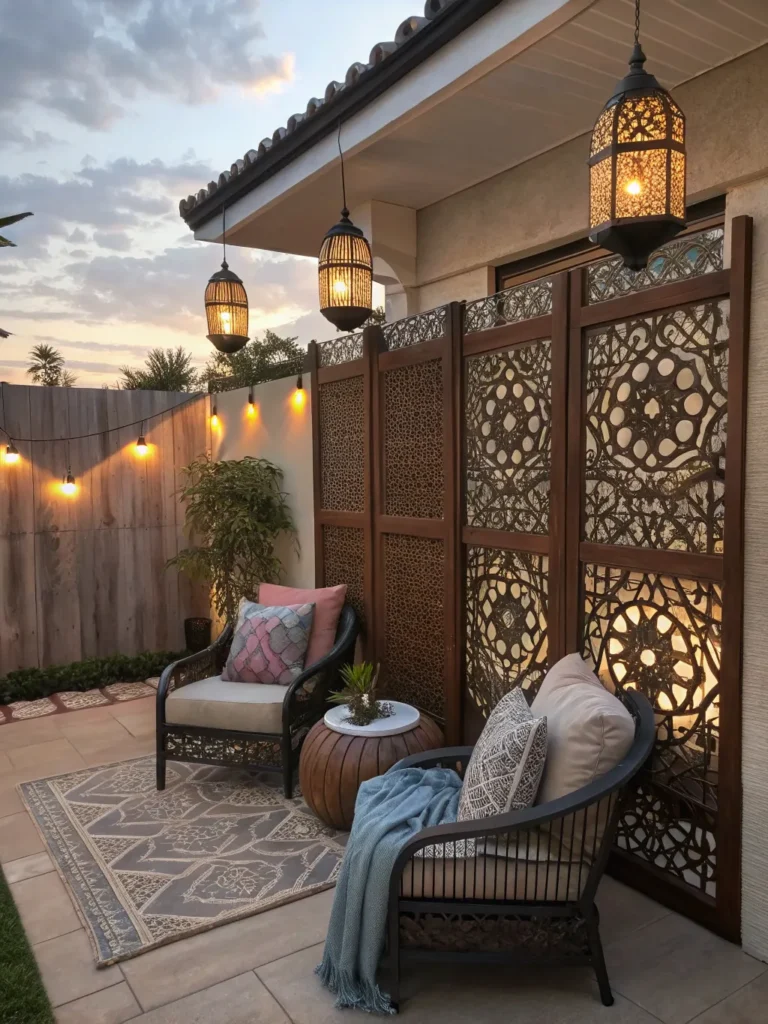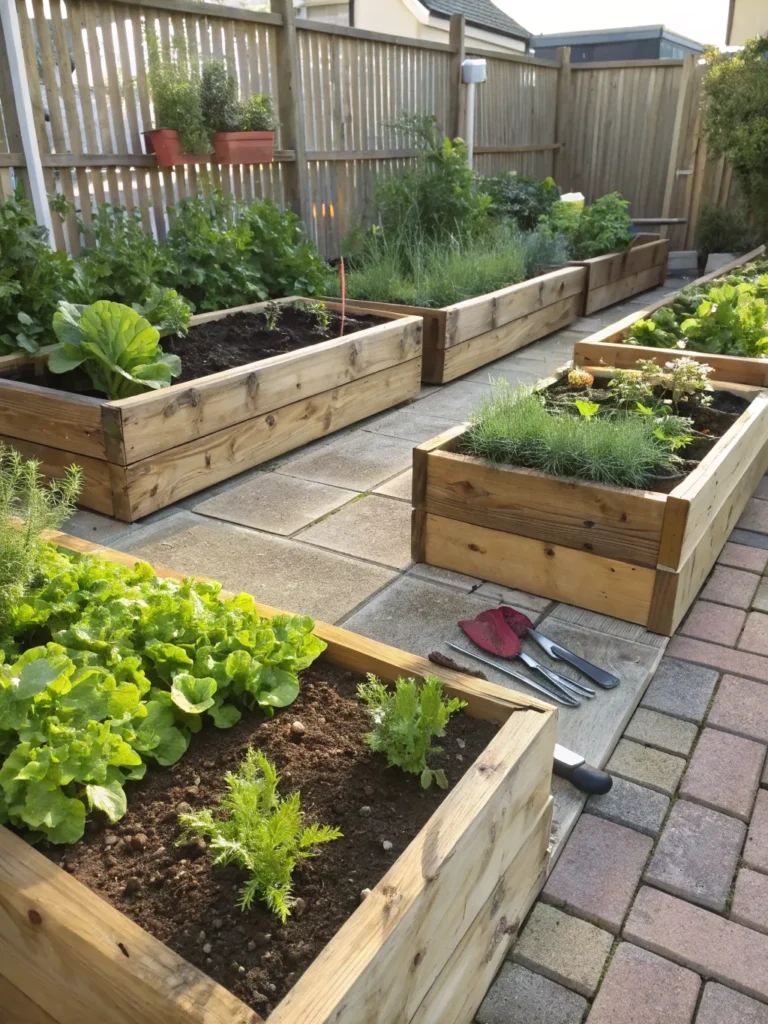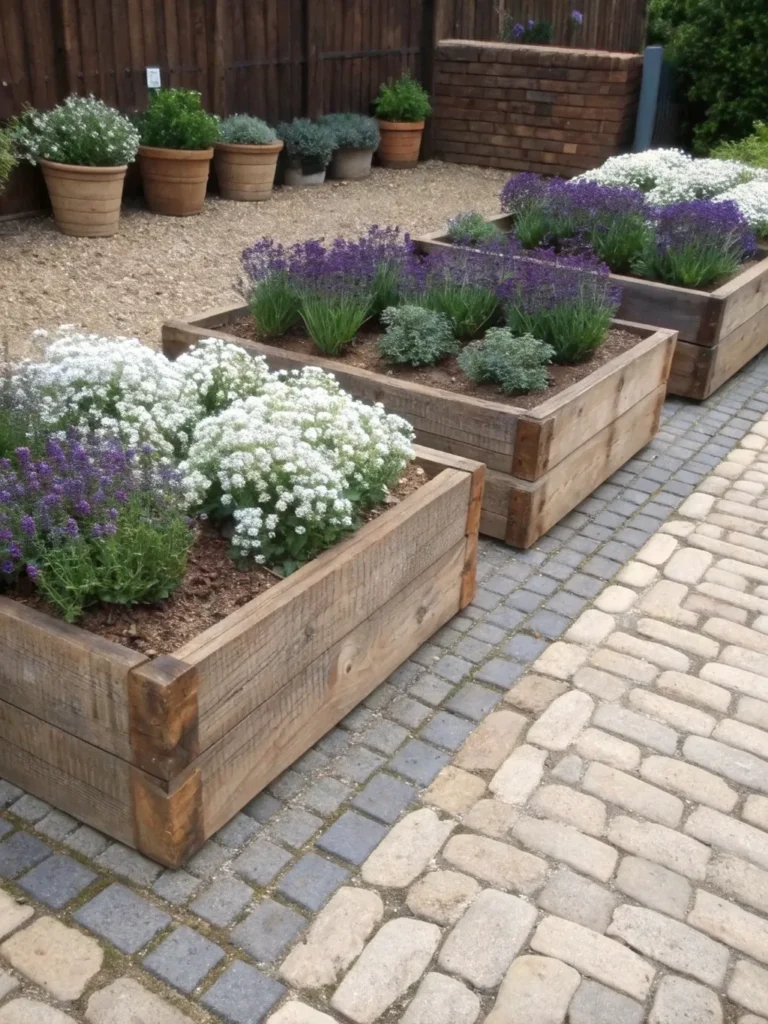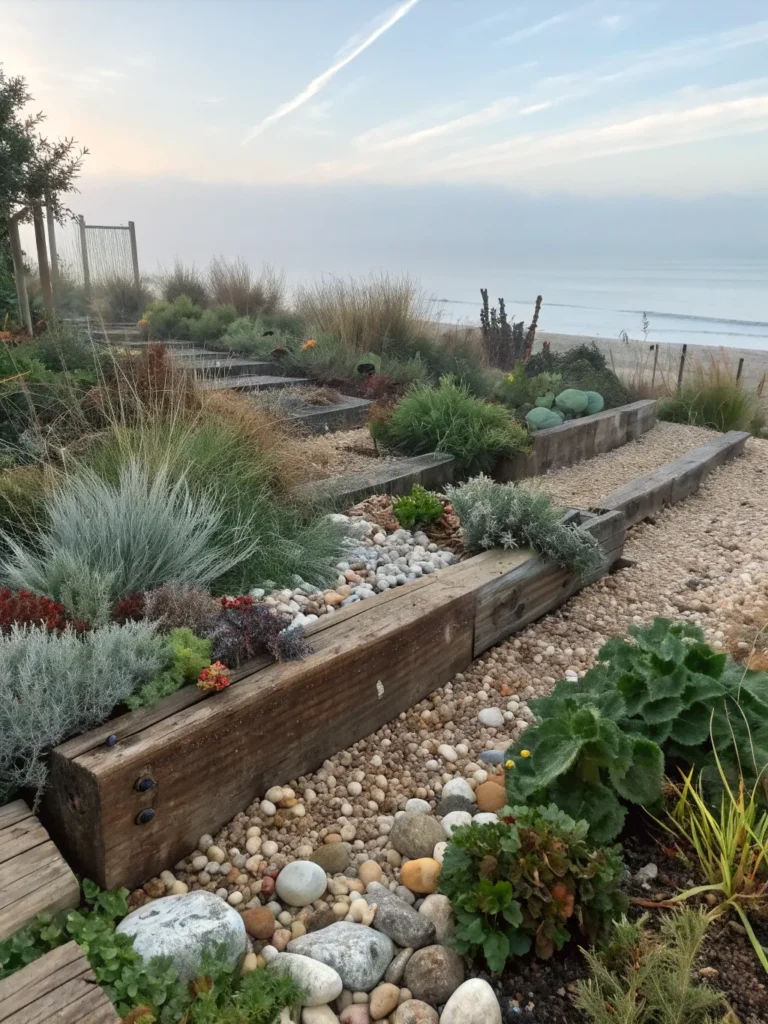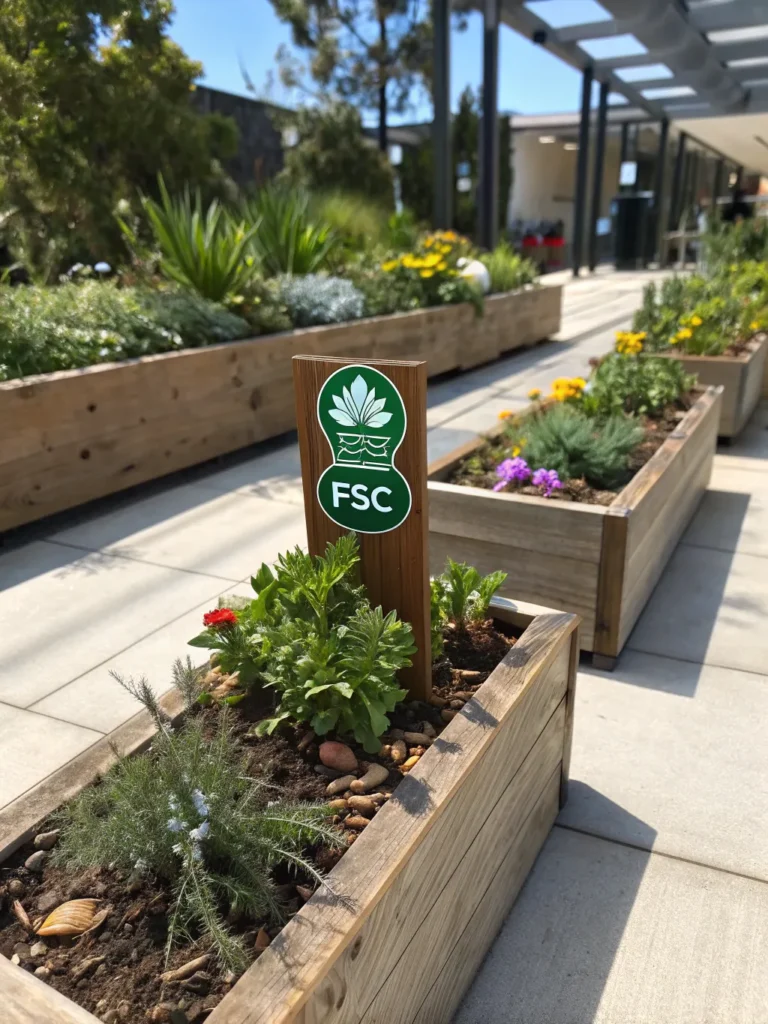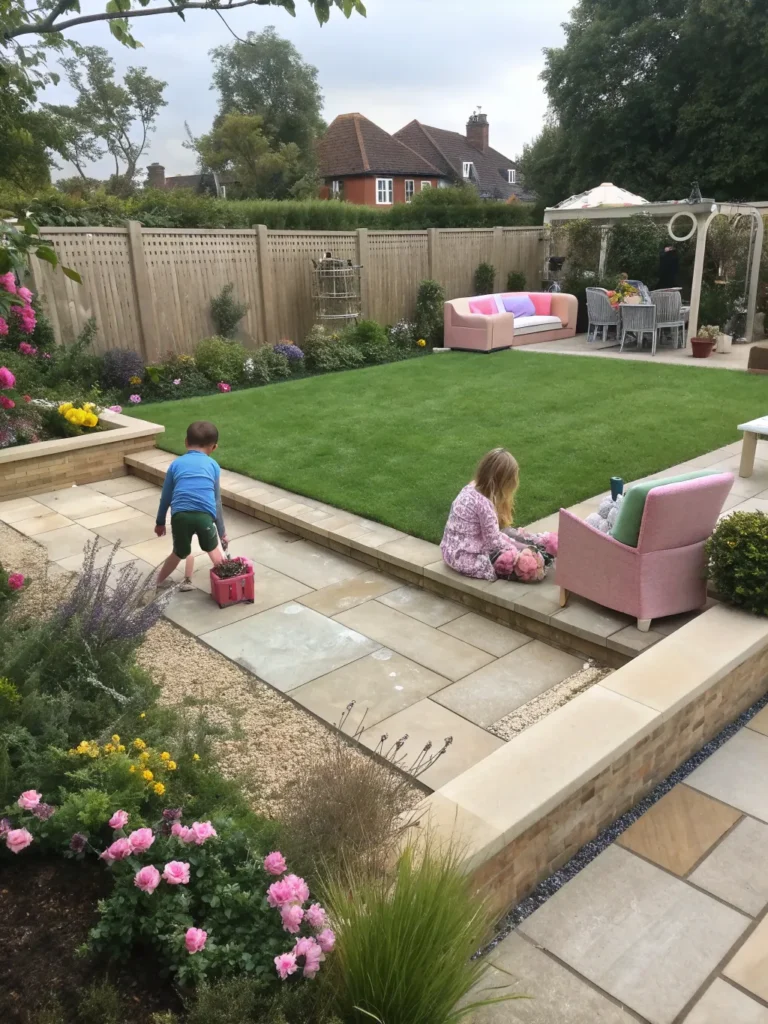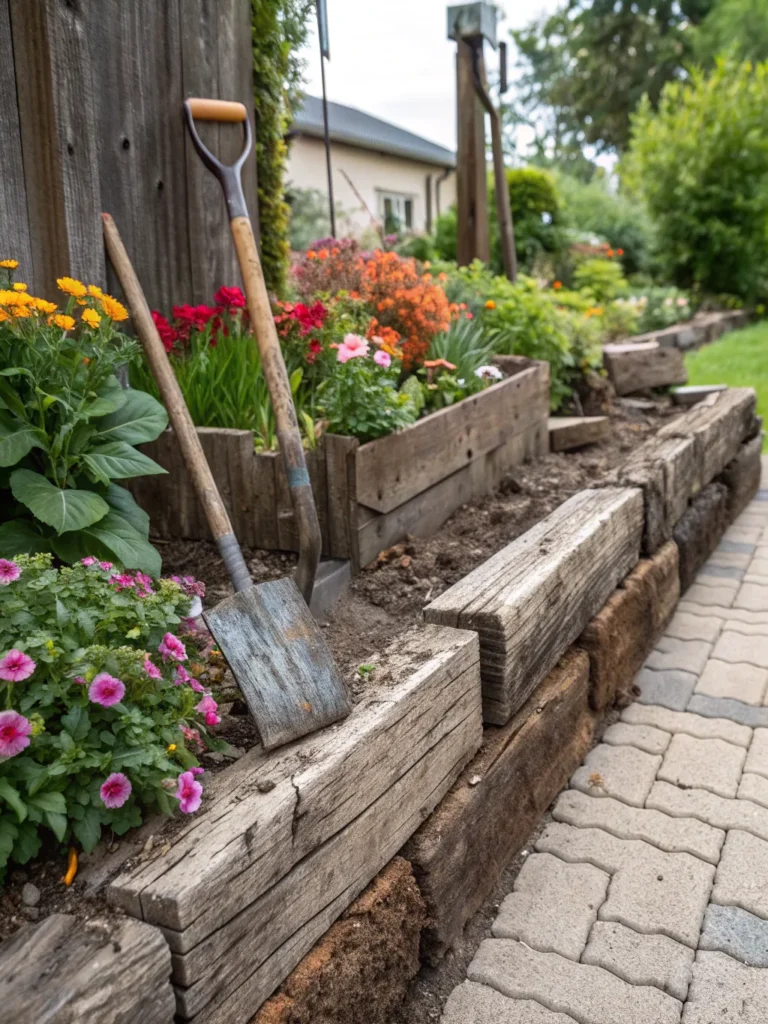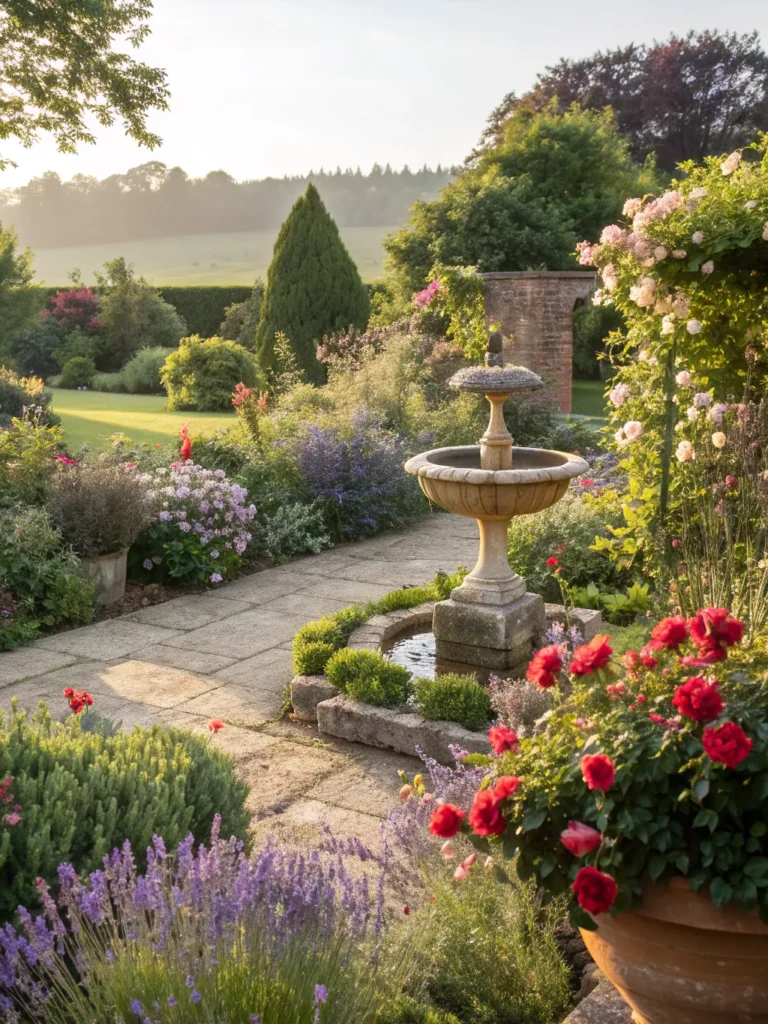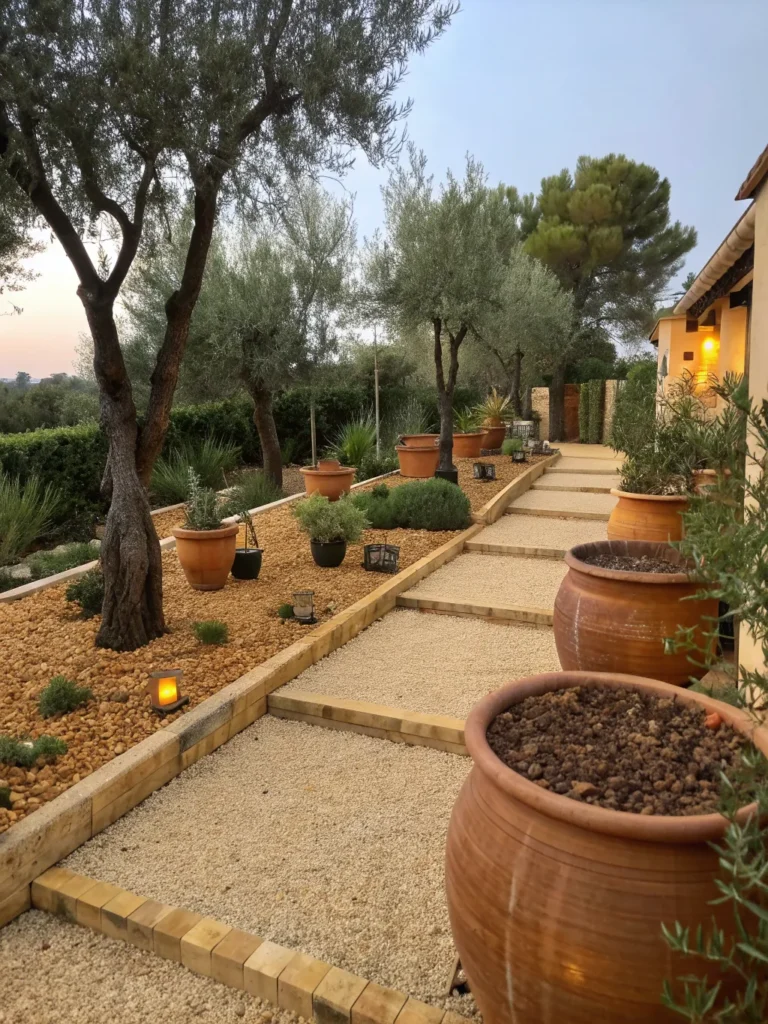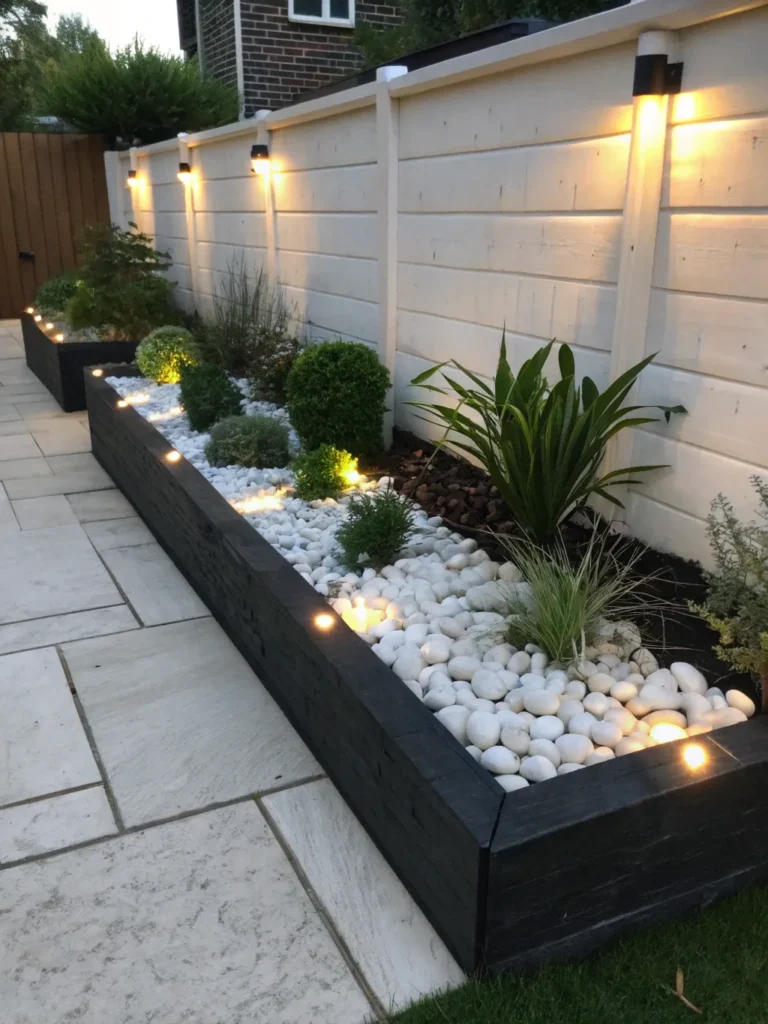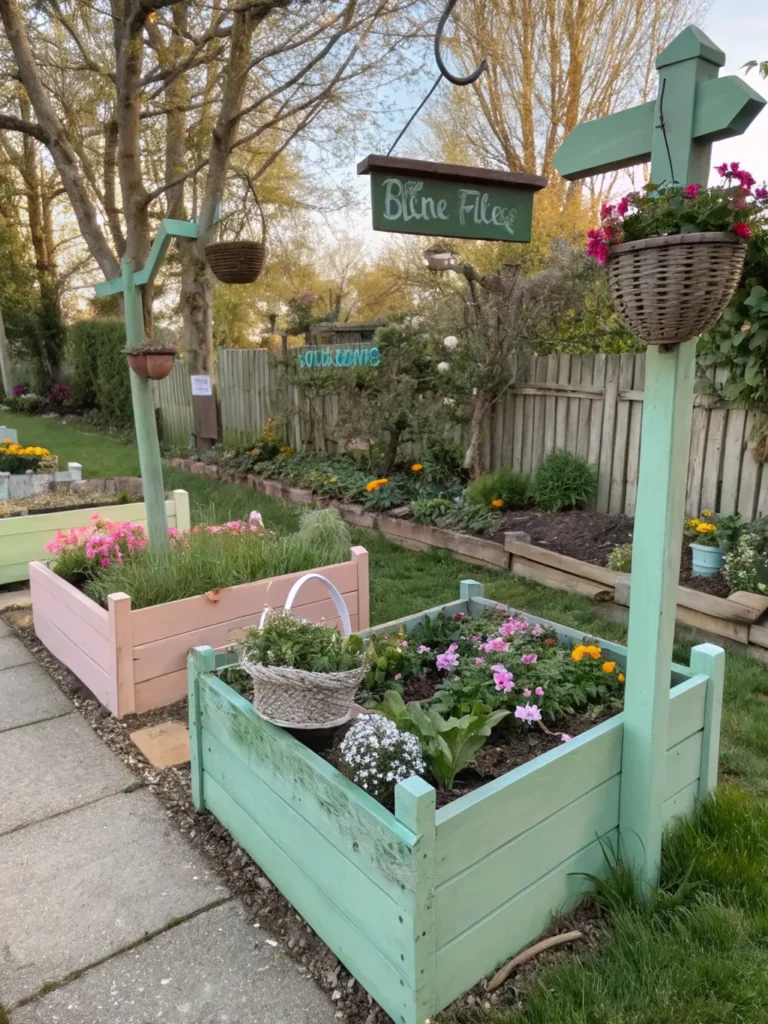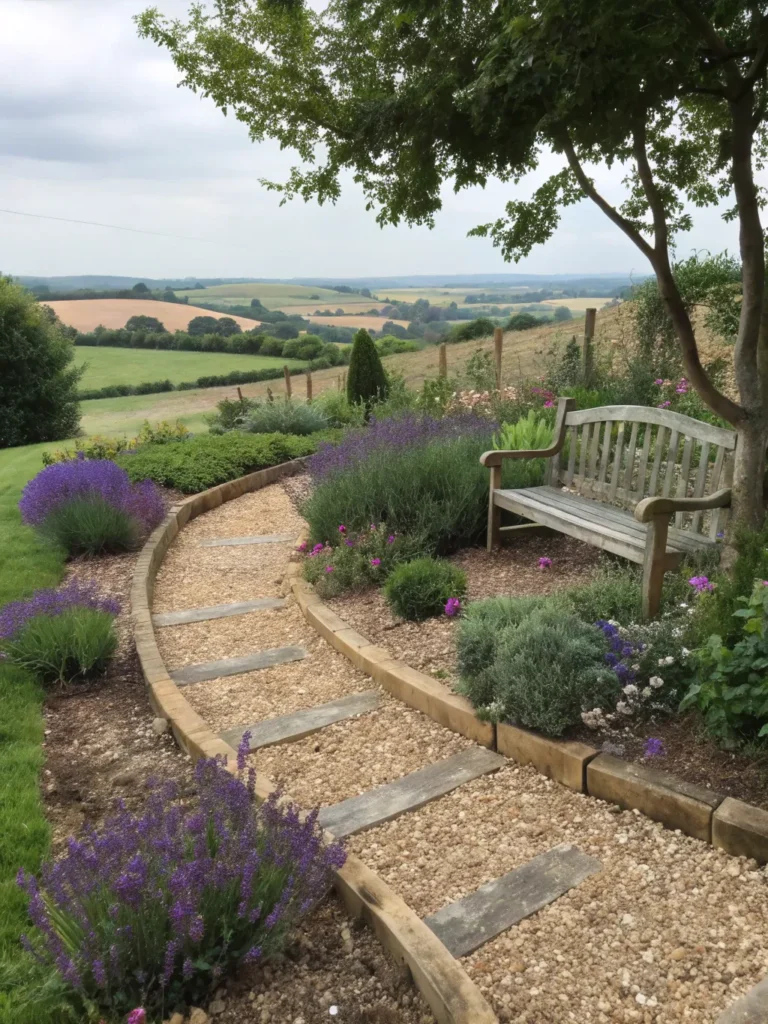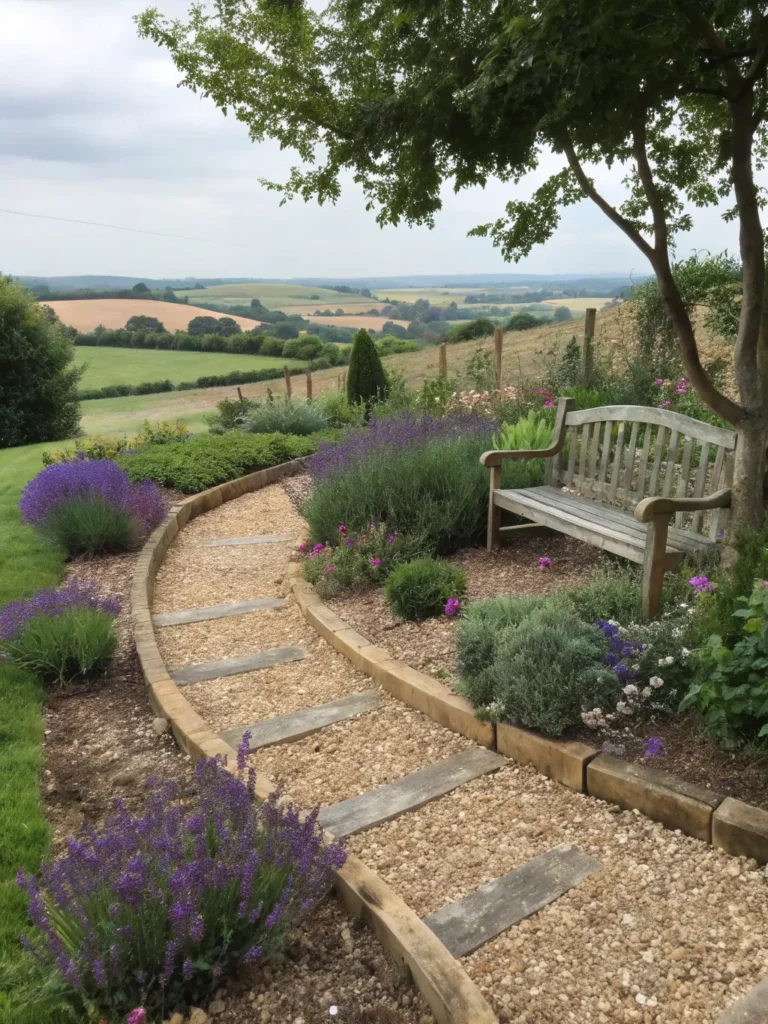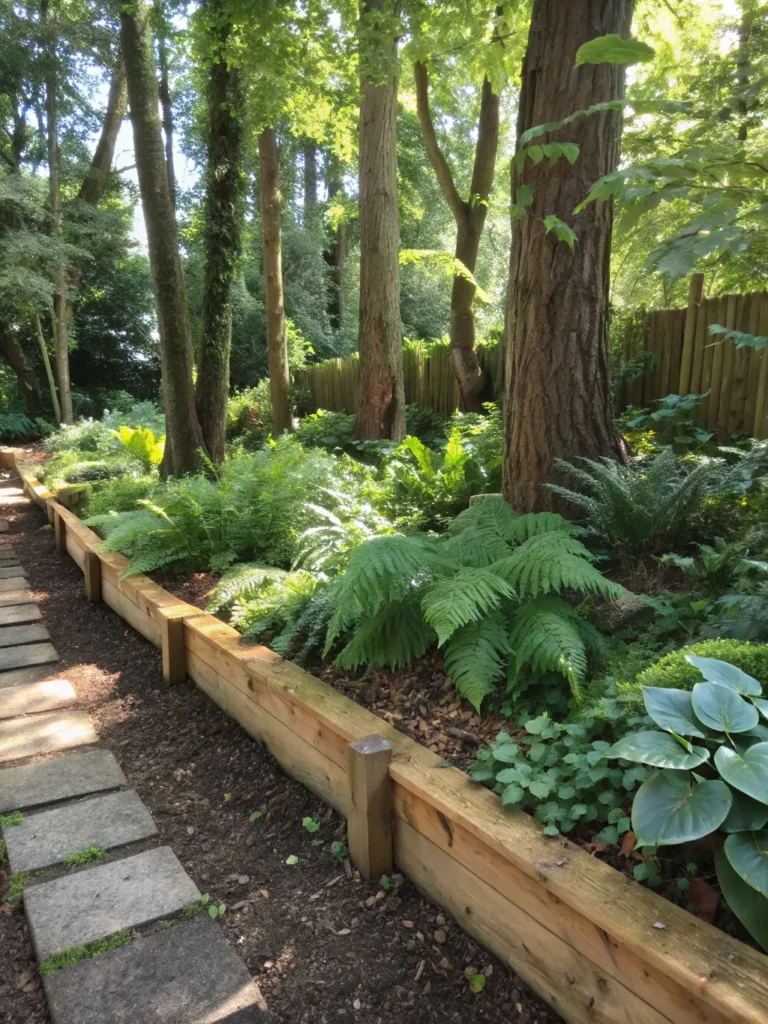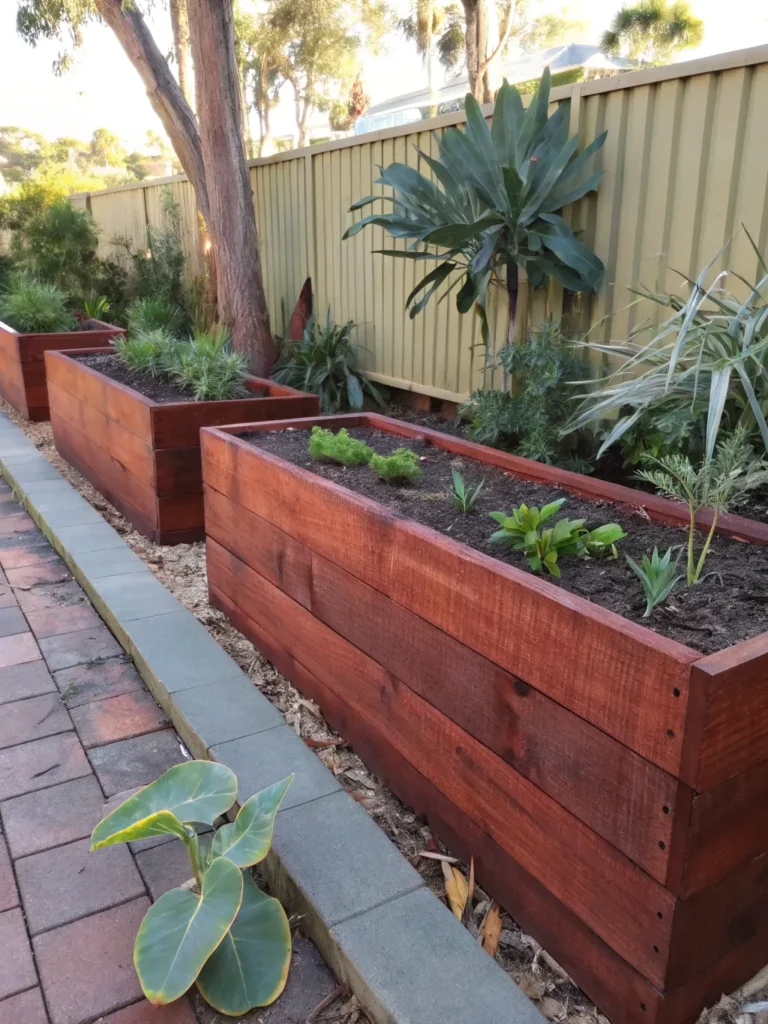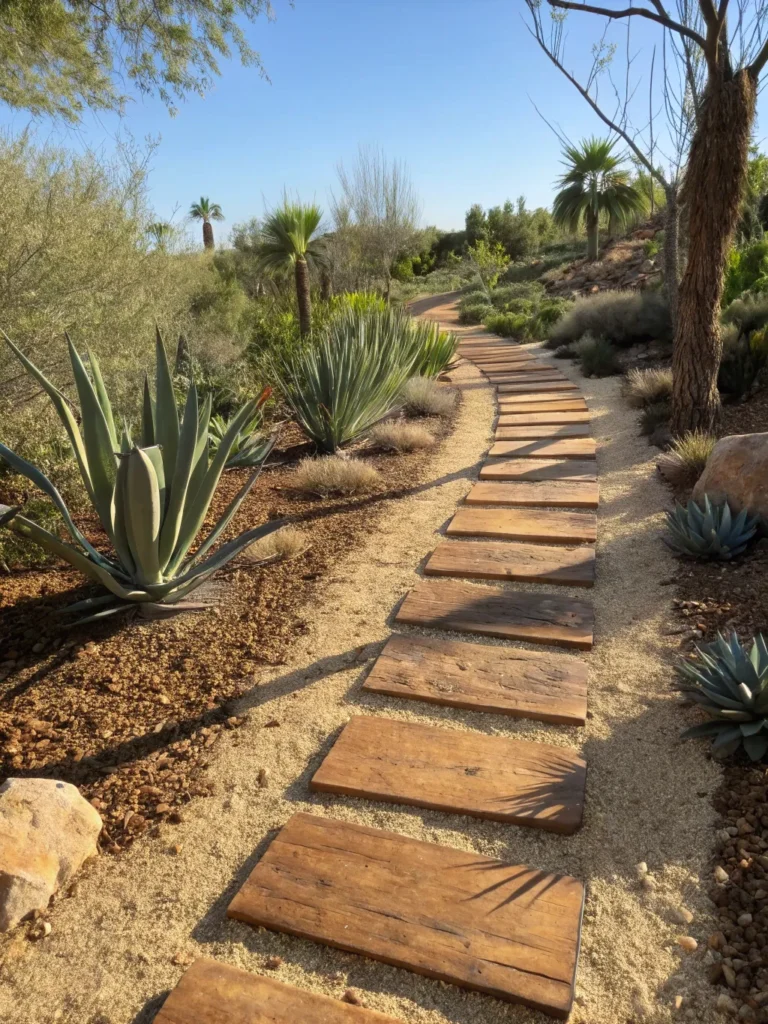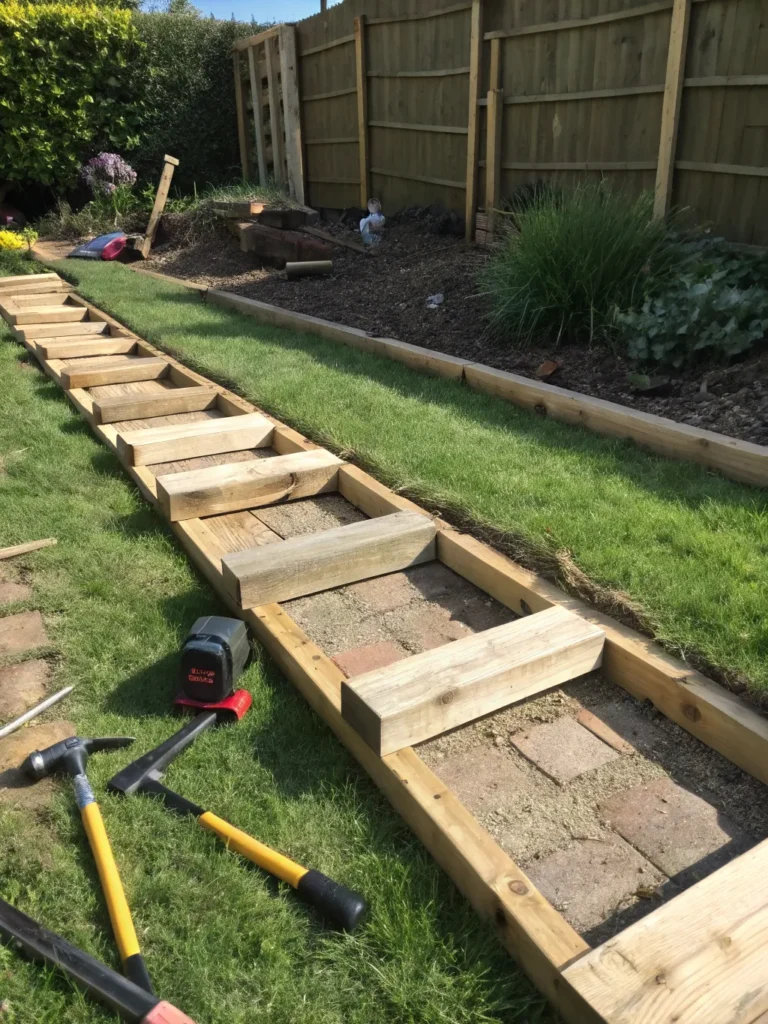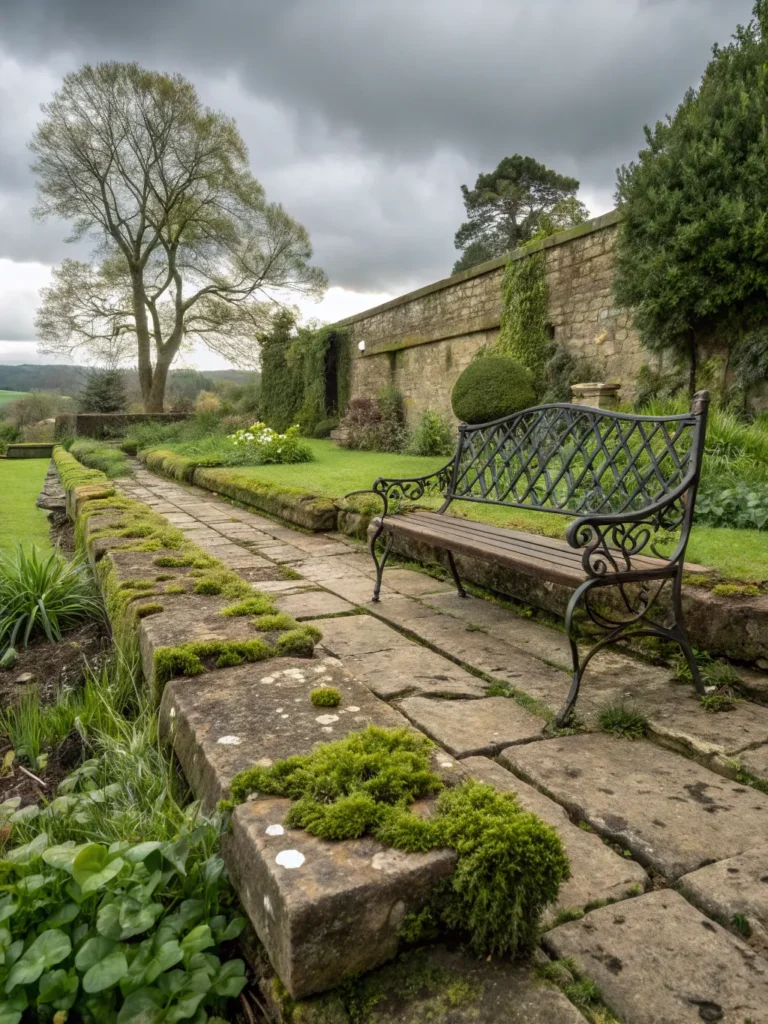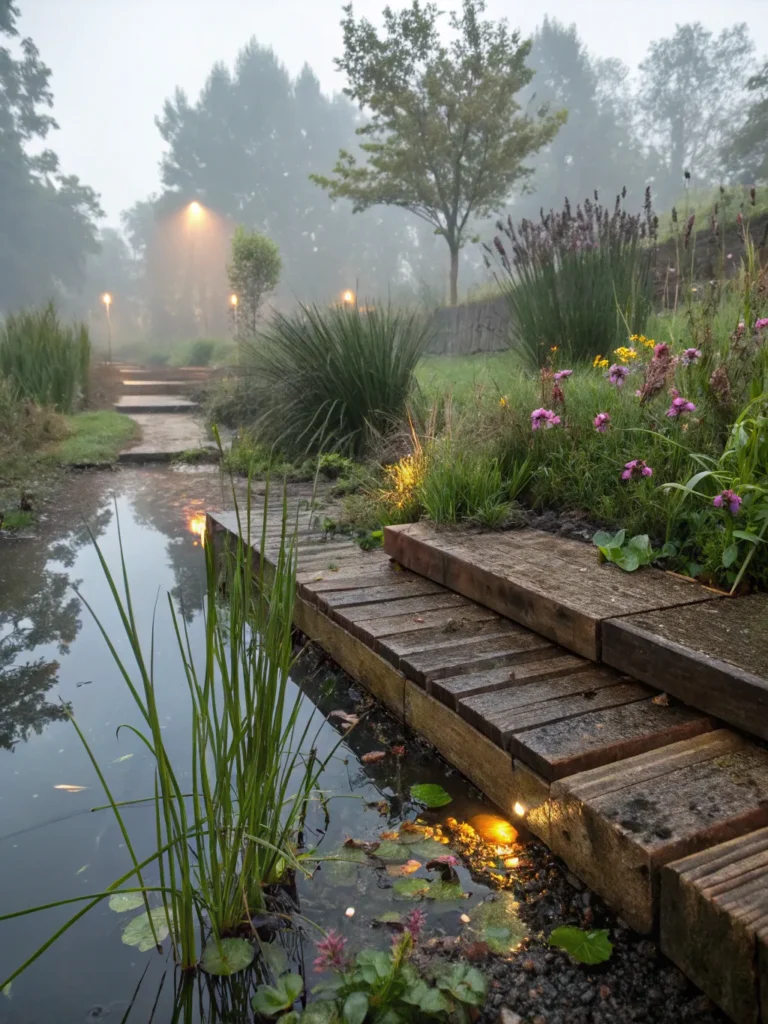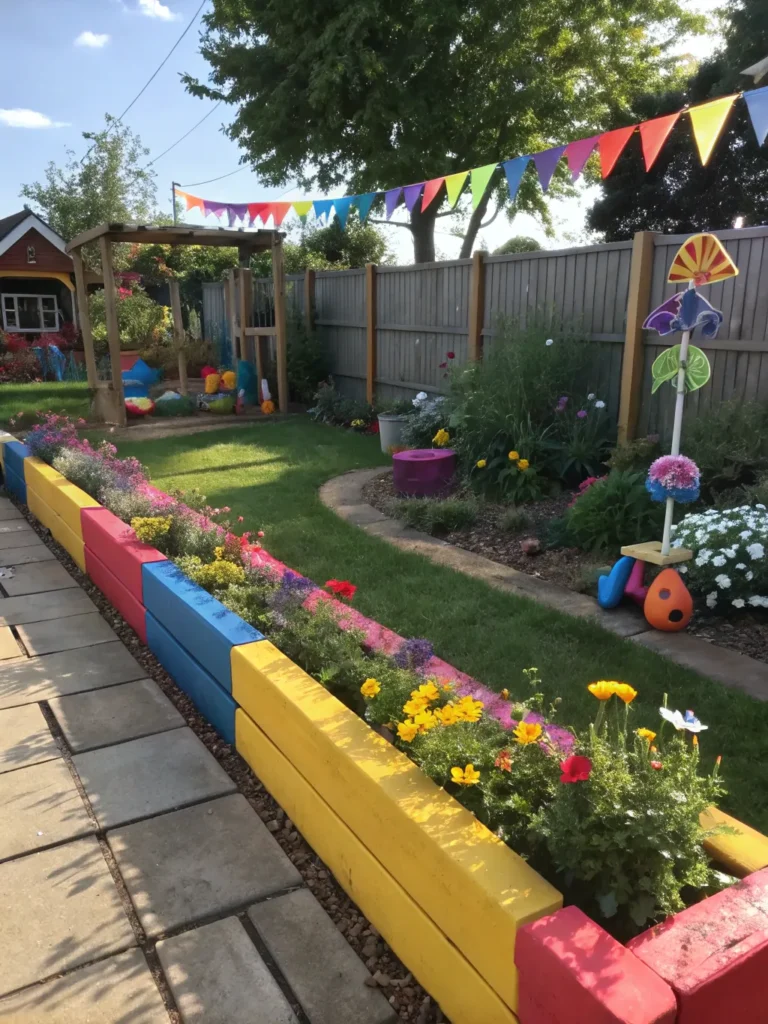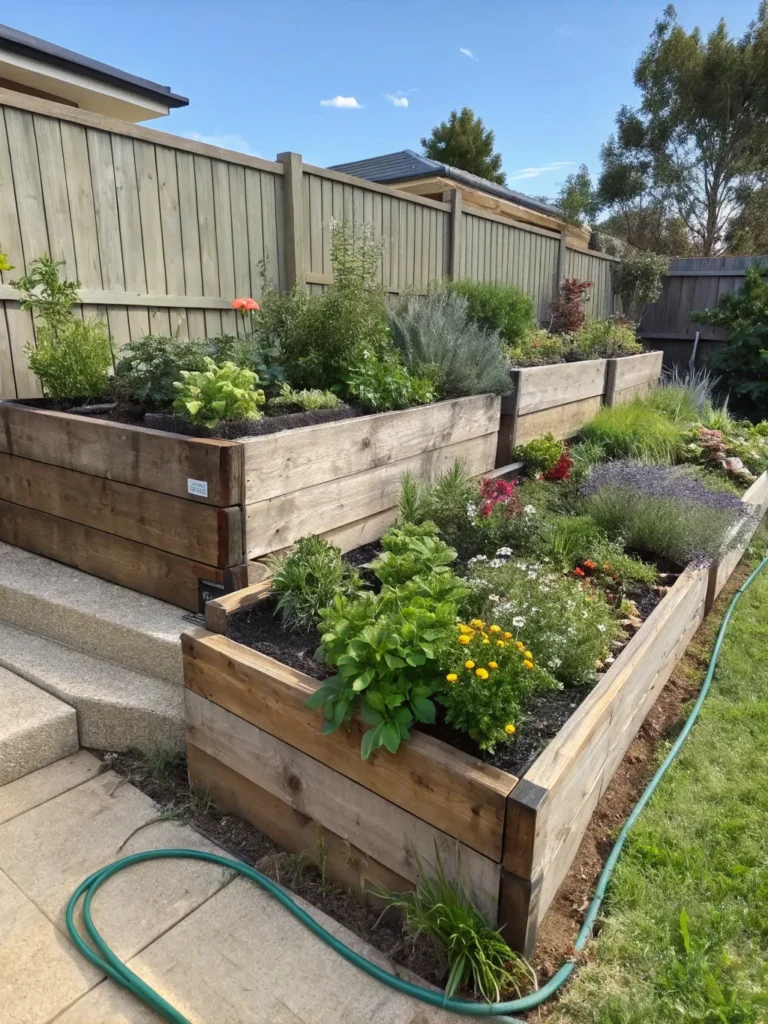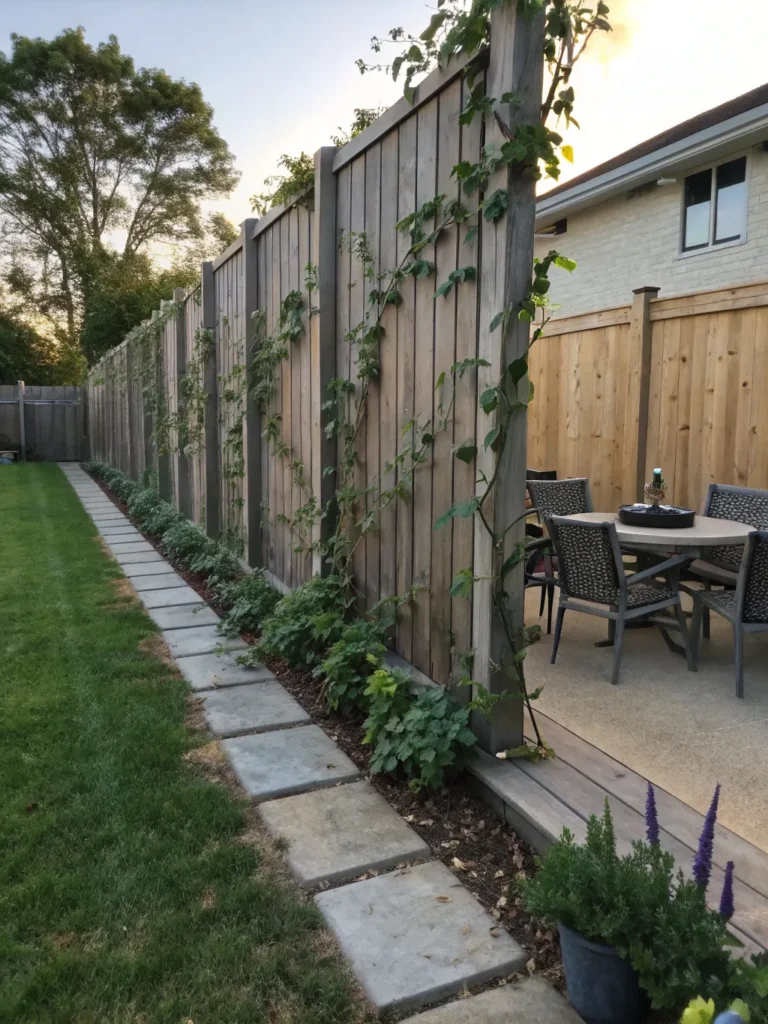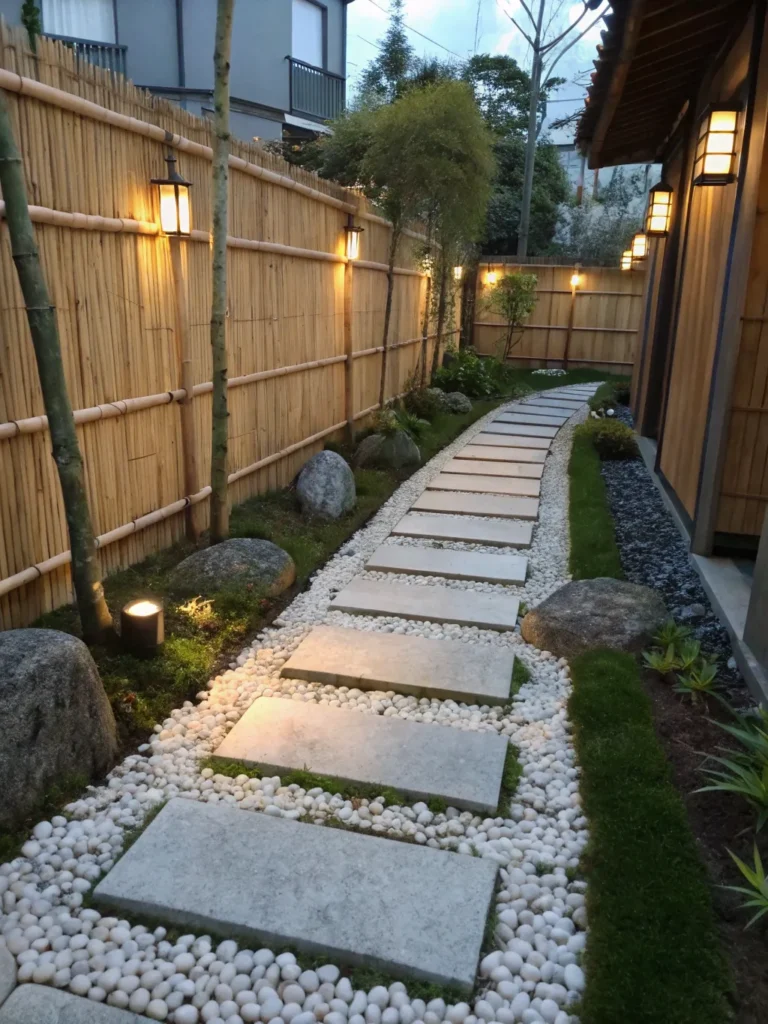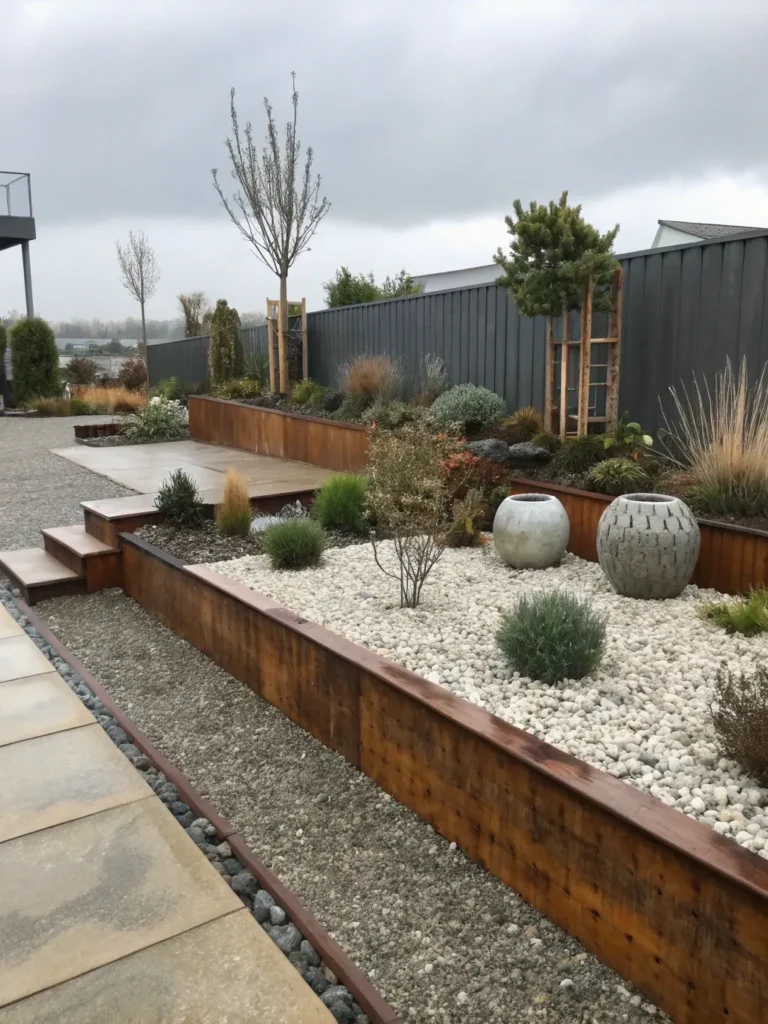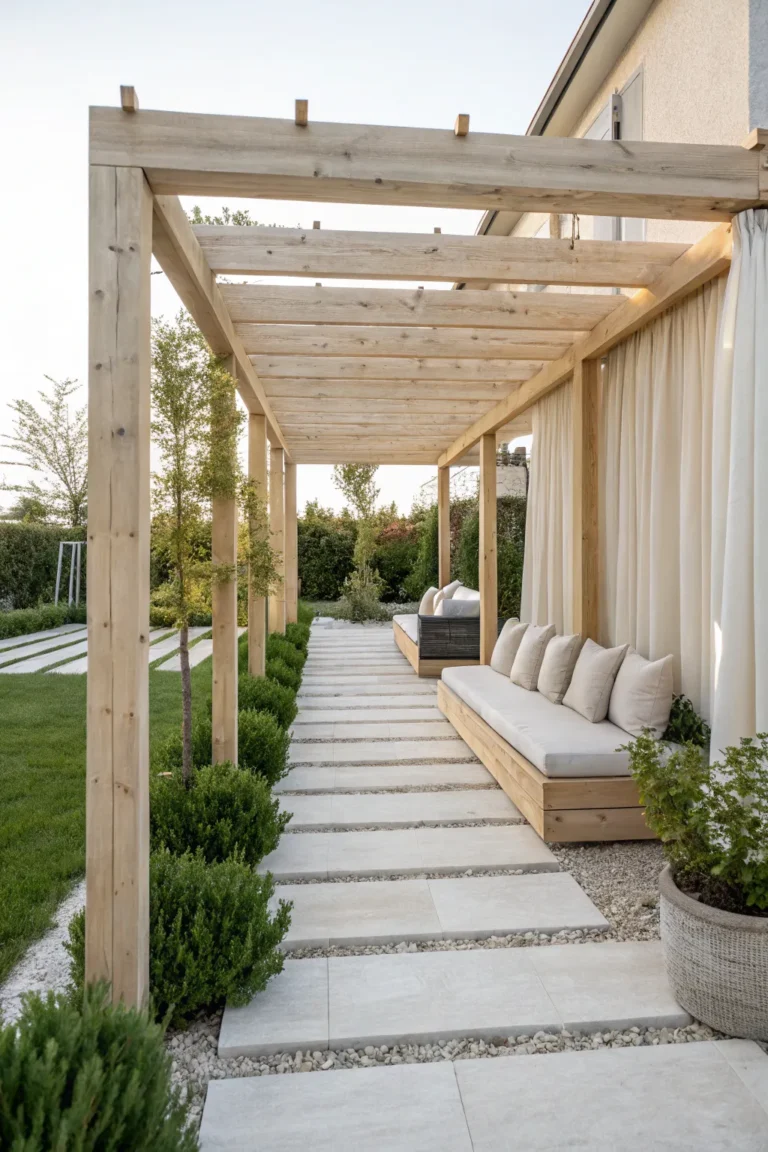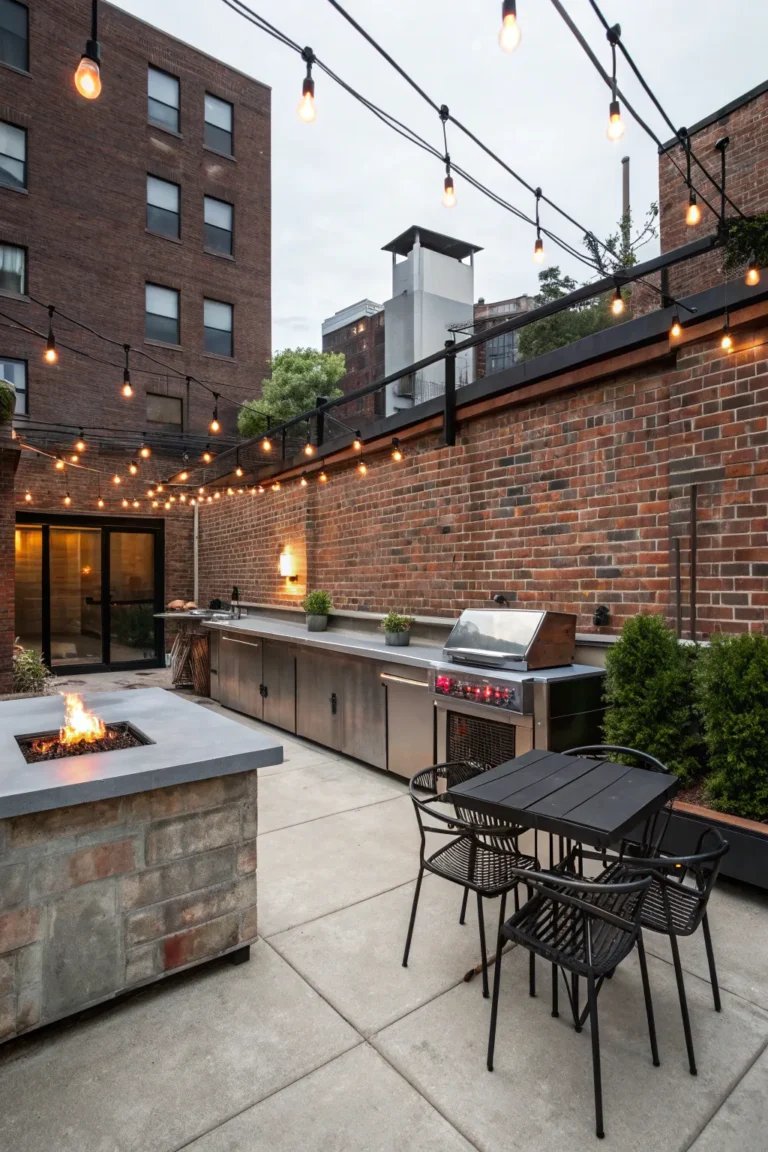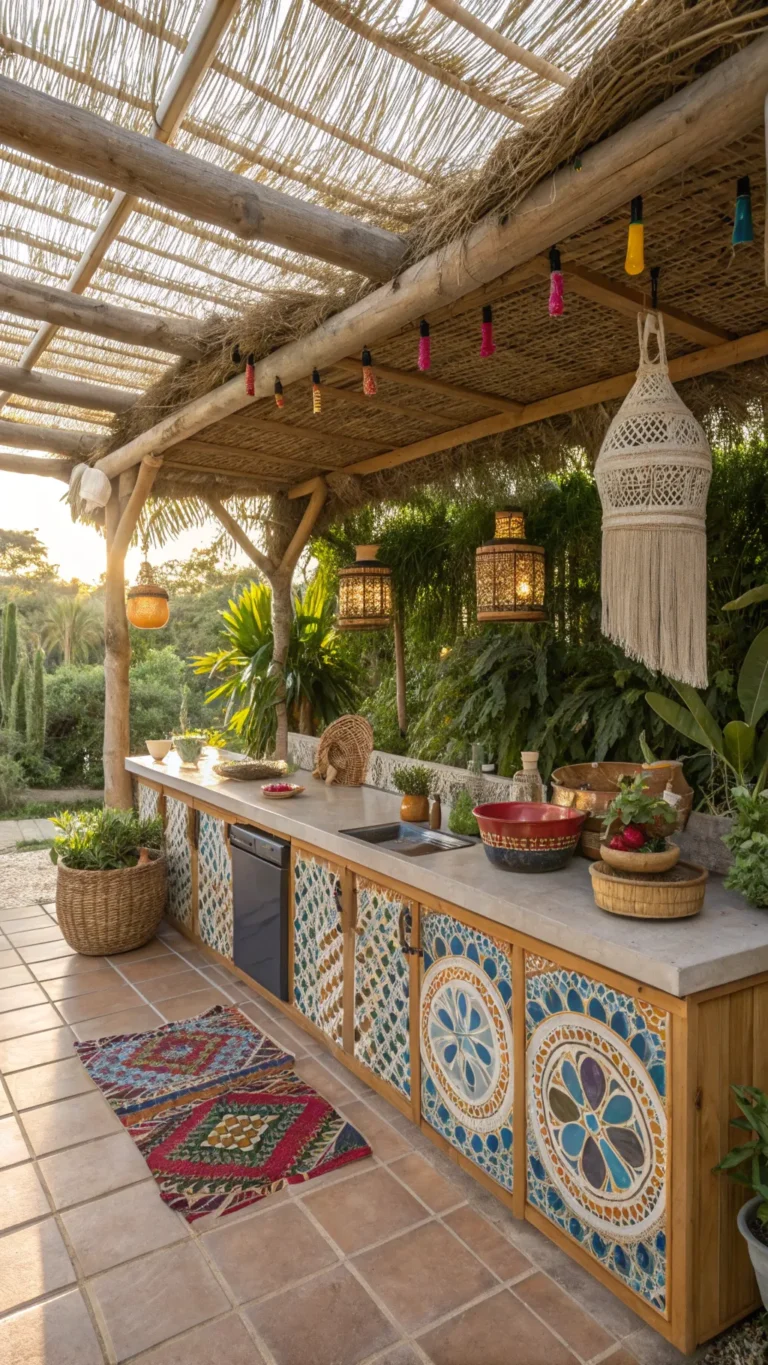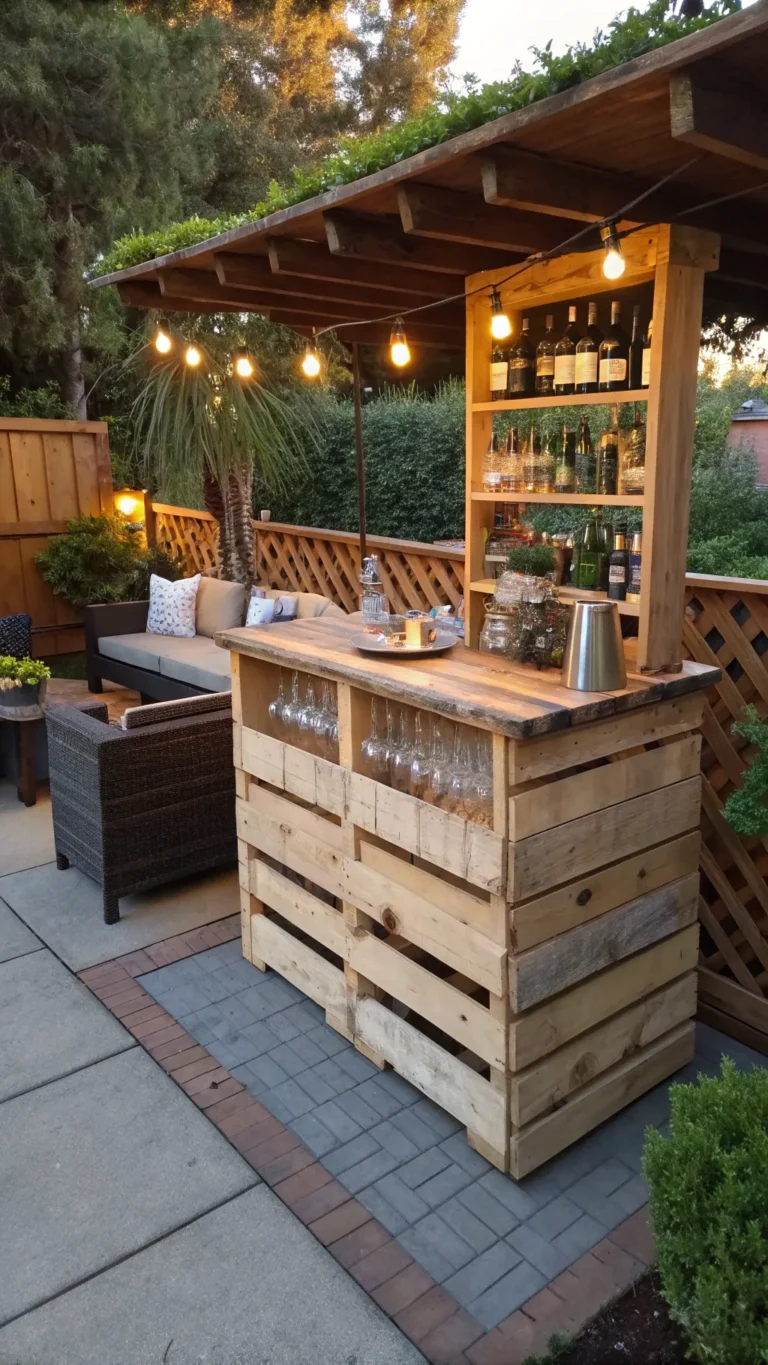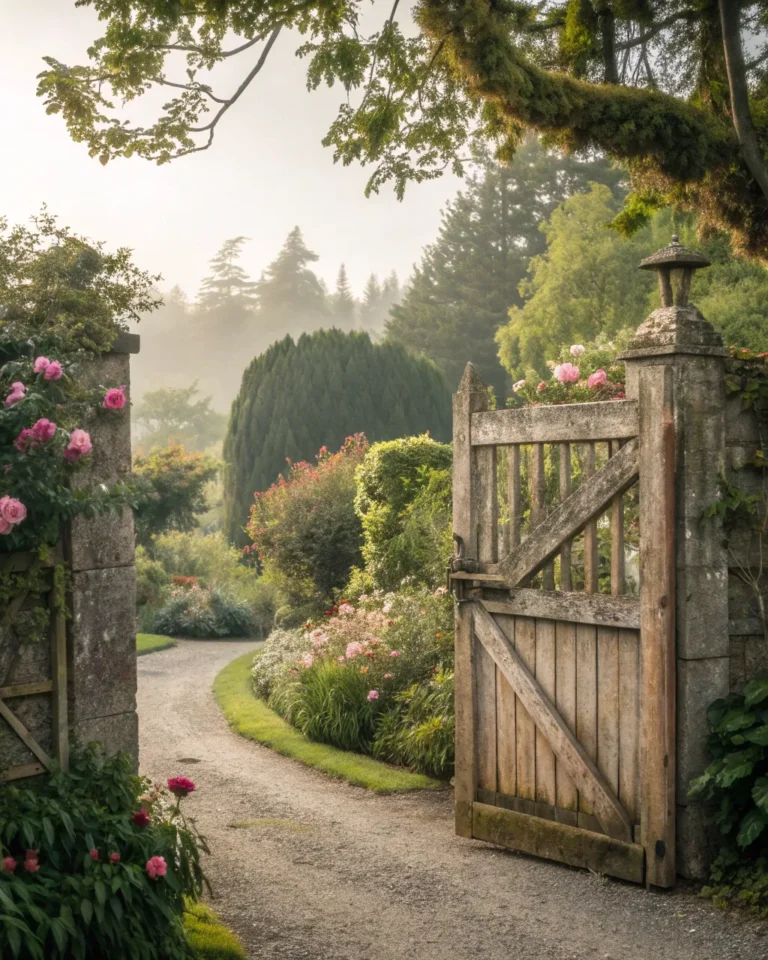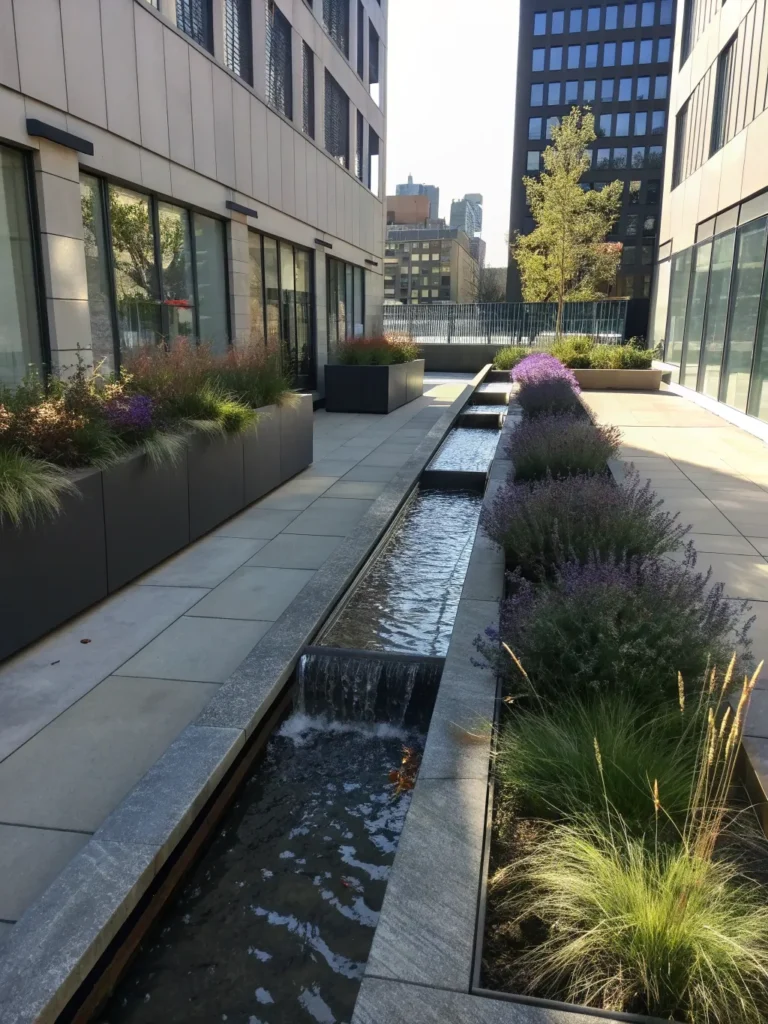40 Garden Borders With Sleepers: Creative Ideas For Garden Edging
Transform your outdoor landscape with these 40 inspiring Garden Borders With Sleepers that seamlessly combine rustic charm, structural durability, and contemporary appeal. Whether you’re designing a sleek modern retreat or a cozy cottage garden, sleepers offer endless creative potential for edging pathways, defining flower beds, and adding architectural interest to any space.
In this article, we'll cover
- Top Garden Sleeper Border Ideas to Redefine Your Garden Design
- 1) Reclaimed Railway Sleepers
- 2) Oak Sleepers
- 3) Rustic Timber Borders
- 4) Eco-Friendly Softwood Sleepers
- 5) Tanalised Pine Sleepers
- 6) Rustic Garden Edging
- 7) Contemporary Concrete Sleepers
- 8) Curved Garden Sleepers
- 9) Highland Logging Sleepers
- 10) Landscaping Timber Sleepers
- 11) Heavy Duty Treated Sleepers
- 12) Modern Sleeper Steps
- 13) Garden Stacked Sleepers
- 14) Sleepers with LED Lighting
- 15) Charmed Charred Sleepers
- 16) Decorative Sleeper Walls
- 17) Raised Beds with Sleepers
- 18) Rustic Oak Planter Sleepers
- 19) Vintage Barged Sleepers
- 20) Sustainable Hardwood Sleepers
- 21) Smooth Finished Sleepers
- 22) Weathered Grain Sleepers
- 23) Traditional Oak Borders
- 24) Timber Nutmeg Sleepers
- 25) Charcoal-Finished Sleepers
- 26) Espresso Dark Sleepers
- 27) Mint Green Sleepers
- 28) Country Garden Sleepers
- 29) Gabion Basket and Sleepers
- 30) Beech Softwood Sleepers
- 31) Australian Jarrah Sleepers
- 32) Terra Brown Sleepers
- 33) Pine Railway Sleepers
- 34) Ancient Oak Sleepers
- 35) Reclaimed Teak Sleepers
- 36) Painted Sleepers for Colorful Edging
- 37) Sleepers with In-Built Planter Boxes
- 38) Vertical Sleepers for Structural Borders
- 39) Sleepers Combined with Stone Pebble Paths
- 40) Mixed Material Borders: Sleepers and Metal Edging
- How to Design Garden Borders With Sleepers That Last
- Best Tools and Materials for Sleeper Garden Borders
- FAQs
- Do sleepers rot over time?
- Can sleepers be used on sloped or uneven ground?
- Is it safe to grow vegetables in sleeper-raised beds?
- How can I prevent weeds from growing around my sleepers?
- Conclusion
Top Garden Sleeper Border Ideas to Redefine Your Garden Design
1) Reclaimed Railway Sleepers
Reclaimed railway sleepers offer a weathered, rustic charm ideal for edging garden paths or creating defined planting zones. Their aged appearance blends well with natural surroundings, making them perfect for country-style gardens.
These sleepers are also eco-conscious, giving a second life to old materials. Their weight provides stability, reducing the need for fixings. Add gravel or bark mulch between the borders for extra texture.
Pair them with climbing plants like clematis for a softened look or use them to frame raised beds. These sleepers are a timeless addition to any outdoor space.
2) Oak Sleepers
Oak sleepers are known for their strength and longevity. Their dense hardwood structure resists decay, making them perfect for permanent garden borders.
They add a sophisticated, structured edge to modern or traditional gardens. Over time, oak ages beautifully into a silvery hue, adding character to the landscape.
Use them horizontally for clean lines or vertically for a sculptural effect. Pair with low-growing shrubs or grasses for contrast.
3) Rustic Timber Borders
Rustic timber borders are ideal for gardens aiming for a natural, woodland feel. These untreated or lightly treated timbers have uneven textures and grain patterns that enhance the organic aesthetic.
They work well with wildflower meadows or cottage-style planting. Rustic sleepers can also help contain gravel or bark mulch, creating clean, defined areas.
Lay them loosely for a relaxed look, or secure them with stakes for more structure. Great for informal garden spaces.
4) Eco-Friendly Softwood Sleepers
Eco-friendly softwood sleepers, typically from sustainably sourced pine or spruce, are a green choice for gardeners.
They’re lightweight, easy to cut, and budget-friendly. These sleepers are pressure-treated for durability and can be stained or painted to suit your garden style.
Great for raised beds, curved borders, or layered planting tiers. Pair with herbs, pollinator plants, or edible gardens for an eco-conscious setup.
5) Tanalised Pine Sleepers
Tanalised pine sleepers are chemically treated to resist rot, making them excellent for long-lasting garden borders. They’re a favorite among landscapers for their balance of affordability and resilience.
Use them to edge gravel paths, support terracing, or build raised planters. Their clean finish suits both traditional and modern gardens.
Consider integrating these sleepers with stone features or metal accents for visual interest.
6) Rustic Garden Edging
Rustic garden edging using sleepers is perfect for casual, relaxed spaces. Whether staggered or neatly aligned, rustic sleepers add an earthy tone to your landscaping.
Pair them with pea gravel, mossy rocks, or vintage garden ornaments. Use uneven heights or distressed finishes for added texture.
This approach complements woodland, wildlife, or permaculture gardens beautifully.
7) Contemporary Concrete Sleepers
Concrete sleepers offer a sleek, industrial twist on traditional timber. They’re available in wood-effect finishes but provide greater resistance to moisture and insects.
These are ideal for modern landscapes that favor clean lines and low maintenance. Use them for minimalist borders or step edges.
Their neutral tones pair well with white gravel, ornamental grasses, or modern sculpture pieces.
8) Curved Garden Sleepers
Curved sleepers allow for creative, flowing garden designs. They soften harsh edges and lead the eye through your space.
Perfect for edging lawns, pathways, or ponds, these sleepers offer dynamic shaping while retaining a strong border.
Use them with contrasting materials like cobblestones or mulch to enhance the effect. Ideal for both modern and cottage gardens.
9) Highland Logging Sleepers
Inspired by rugged Scottish landscapes, highland logging sleepers are thick, rough-cut timbers ideal for bold border statements.
They bring a raw, untamed feel to gardens and work well in sloped or terraced areas. Their bulk also makes them suitable for retaining soil.
Pair them with hardy perennials or ornamental grasses. Consider using a mix of vertical and horizontal placements.
10) Landscaping Timber Sleepers
Landscaping timber sleepers are versatile, pre-treated options widely used in both private and commercial settings.
They work well for building terraced gardens, creating retaining walls, or edging large planting areas. Their uniform sizing simplifies installation.
Paint or stain them to suit your garden palette. A functional and attractive solution for structured borders.
11) Heavy Duty Treated Sleepers
Heavy duty treated sleepers are built for high-traffic areas and long-term durability. These are pressure-treated and thicker than standard sleepers.
Use them for raised vegetable beds, terracing, or structural edging. Their weight and size make them excellent for larger-scale designs.
Pair with robust features like stone walls, pergolas, or fire pits.
12) Modern Sleeper Steps
Combining function with design, modern sleeper steps use thick-cut timbers to create level transitions in sloped gardens.
They can double as informal seating or plant staging. Use gravel or slate between steps for contrast.
Light up the steps with integrated solar LEDs for added evening ambiance and safety.
13) Garden Stacked Sleepers
Stacked sleepers offer a layered effect, creating depth and height in garden beds or retaining walls. This technique adds structure and elegance to your landscape.
Ideal for multi-level gardens or steep plots. Use strong fixings or rebar to secure each layer.
Finish with flowering plants cascading over the edges for a softened look.
14) Sleepers with LED Lighting
Incorporating LED lighting into sleeper borders adds visual drama and safety. Install strip lights or spotlights under the edges of sleepers.
This modern upgrade highlights your pathways and borders at night. It’s especially effective along patios or decked areas.
Opt for warm white or solar-powered LEDs to keep the design low-energy and inviting.
15) Charmed Charred Sleepers
Charred timber, or Shou Sugi Ban, offers a dark, textured surface with natural resistance to rot and pests. These sleepers are bold and striking.
Use them in contemporary or Japanese-style gardens. The contrast with greenery is stunning.
Pair with minimalist elements like stone and gravel to emphasize their unique surface.
16) Decorative Sleeper Walls
Low walls made from sleepers serve as borders, seating, and retaining structures. They’re a smart multi-functional choice.
Use decorative finishes like varnish, paint, or carvings. Add cushions to transform into casual seating.
These are great for social zones, patios, or sunken fire pits.
17) Raised Beds with Sleepers
Sleepers are a top choice for building raised garden beds. Their sturdiness supports soil, and their height reduces strain during planting.
Line the beds with membrane for longer lifespan. Use untreated sleepers if growing edibles.
Plant herbs, vegetables, or seasonal flowers for a productive and decorative space.
18) Rustic Oak Planter Sleepers
Rustic oak sleepers can be arranged into box-style planters. These provide a natural yet refined look for patios or entrances.
Use them to showcase feature plants like lavender or dwarf shrubs. They age beautifully over time.
Drill drainage holes and add a liner for longevity.
19) Vintage Barged Sleepers
Vintage barge or dock sleepers carry nautical character, ideal for coastal or marine-themed gardens.
They often show signs of use—bolt holes, wear marks—which add authentic charm. Use them near water features or ponds.
Complement with pebbles, driftwood, or beach grasses.
20) Sustainable Hardwood Sleepers
Sustainably harvested hardwood sleepers are an eco-conscious and long-lasting option. Choose FSC-certified varieties like iroko or mahogany.
They resist decay and add richness in tone. Best suited for premium garden designs.
Pair with native planting and other sustainable materials.
21) Smooth Finished Sleepers
For a polished look, choose planed smooth sleepers. These are safe for hands-on areas like kid’s play zones or seating borders.
Paint or oil them for added effect. Their clean finish suits minimalist or formal gardens.
Use to frame lawns or pathways.
22) Weathered Grain Sleepers
Weathered grain sleepers offer aged elegance, making them perfect for rustic or historical garden themes.
The textured surface complements natural stone or reclaimed brick. They’re especially good for borders with vintage flowers like hollyhocks.
Use horizontally for benches or upright as a sculptural backdrop.
23) Traditional Oak Borders
Oak remains a timeless material in garden design. Use traditional oak sleepers as edging to complement classic English garden layouts.
Line pathways, flowerbeds, or lawn edges. Their neutral tone pairs well with roses and lavender.
Finish with a light oil or leave to age naturally.
24) Timber Nutmeg Sleepers
Nutmeg-colored sleepers add warmth and depth to your garden layout. This shade pairs nicely with golden gravel or cream paving.
Use to create harmony between modern and rustic elements. Great for Mediterranean or desert-style gardens.
Accent with warm-colored flowers or succulents.
25) Charcoal-Finished Sleepers
Charcoal sleepers provide a dramatic contrast against green plants and bright flowers. They create strong visual borders.
Use them in modern, urban, or black-and-white themed gardens. Pair with white gravel, concrete slabs, or metal features.
Add uplighting for a striking nighttime effect.
26) Espresso Dark Sleepers
Rich espresso tones add elegance and a premium feel to your garden edging. These sleepers complement lush greenery and dark mulch.
Ideal for formal gardens or high-contrast themes. Seal with protective oil to preserve the dark color.
Use around focal points or architectural plants.
27) Mint Green Sleepers
Mint green sleepers add a playful, refreshing touch. Great for cottage gardens, children’s areas, or herb borders.
Paint standard sleepers using outdoor wood paint. Coordinate with other pastel elements like planters or trellises.
Adds vibrancy and a cheerful vibe to small gardens.
28) Country Garden Sleepers
Sleepers used in a country garden style evoke simplicity and charm. Use aged or lightly stained wood to match the aesthetic.
Surround with lavender, daisies, and grasses. Add curved lines and natural stone paths.
Great for a homely, welcoming border.
29) Gabion Basket and Sleepers
Mix sleepers with gabion baskets filled with rocks for a bold, architectural look. It offers texture and stability.
Use this combo on sloped gardens, terraced areas, or as retaining features.
Adds industrial chic to the natural beauty of wood.
30) Beech Softwood Sleepers
Beech sleepers provide a lighter, elegant tone compared to oak or pine. They brighten shady areas and work well with woodland-style planting.
Use them for delicate border edging. Complement with hostas, ferns, and hellebores.
Finish with a clear sealant for durability.
31) Australian Jarrah Sleepers
Jarrah is a dense hardwood with rich red-brown tones. Imported from Australia, it’s durable and exotic.
Use sparingly in feature borders or around raised beds. Its color darkens beautifully over time.
Works well with Mediterranean or tropical planting schemes.
32) Terra Brown Sleepers
Terra brown sleepers offer earthy depth. They blend into mulched beds and stone pathways with ease.
Ideal for warm, neutral palettes. Use in naturalistic gardens or desert-inspired designs.
Add drought-tolerant plants for a cohesive feel.
33) Pine Railway Sleepers
Traditional pine railway sleepers are budget-friendly and versatile. Easy to work with and widely available.
Best used for simple borders, steps, or raised planters. Treat for longer life.
Stain or paint to match your design theme.
34) Ancient Oak Sleepers
Aged oak sleepers with visible cracks and knots bring historical character. Use them where weathered authenticity matters.
Perfect for heritage gardens or historical properties. Surround with antique-style ornaments or topiary.
Keep finishes natural to highlight their aged beauty.
35) Reclaimed Teak Sleepers
Teak sleepers are rare, but their durability and rich grain make them highly desirable. They resist moisture, ideal for damp gardens.
Use in rain gardens or alongside water features. Leave unfinished for a weathered look.
Sustainable, luxurious, and unique.
36) Painted Sleepers for Colorful Edging
Paint sleepers in bold colors to create cheerful borders. Use weather-resistant paint for durability.
Coordinate with other features like sheds or benches. Great for playful or artistic gardens.
Try color-blocking or stripes for a modern touch.
37) Sleepers with In-Built Planter Boxes
Combine edging with utility by turning sleepers into raised planters. Cut out interior sections or box-frame them.
Fill with herbs, flowers, or seasonal displays. Great for compact gardens needing function and form.
Line with membrane and add drainage holes.
38) Vertical Sleepers for Structural Borders
Installing sleepers vertically adds height and drama to your border. Ideal for screening or creating garden zones.
Use differing heights for wave-like movement. Secure deeply for stability.
Paint or burn for added visual interest.
39) Sleepers Combined with Stone Pebble Paths
Contrast wooden sleepers with soft stone pebbles. Lay them side by side to create tactile, mixed-material borders.
Great for Zen or minimalist gardens. Use pale stones for contrast or dark ones for cohesion.
Add stepping stones or lanterns.
40) Mixed Material Borders: Sleepers and Metal Edging
Combine wood with rusted steel or aluminium edging for an industrial-chic vibe. This pairing balances warm and cool textures.
Ideal for modern and dry garden styles. Highlight with architectural planting.
A creative way to elevate basic sleeper designs.
How to Design Garden Borders With Sleepers That Last
- Use a weed membrane underneath to reduce maintenance
- Choose treated or hardwood options for longevity
- Anchor sleepers with steel rods or pegs if on slopes
- Seal cut ends with wood preservative
- Backfill with gravel for drainage where needed
Best Tools and Materials for Sleeper Garden Borders
- Circular saw or hand saw for cutting
- Drill with long screws or rebar for anchoring
- Wood preserver or oil
- Landscaping fabric
- Rubber mallet, shovel, and spirit level
FAQs
Conclusion
Garden Borders With Sleepers offer a practical and stylish way to elevate your garden’s design. From rustic charm to modern sophistication, there’s a sleeper style to match every outdoor theme. With proper installation and maintenance, they provide long-term structure, definition, and beauty.
Explore the 40 ideas above to find inspiration for your own space. Whether you’re creating raised beds or edging pathways, sleepers make it easy to combine form and function..
Discover more from Leafy Haven Home | Stylish Garden Ideas & Cozy Decor Tips
Subscribe to get the latest posts sent to your email.

